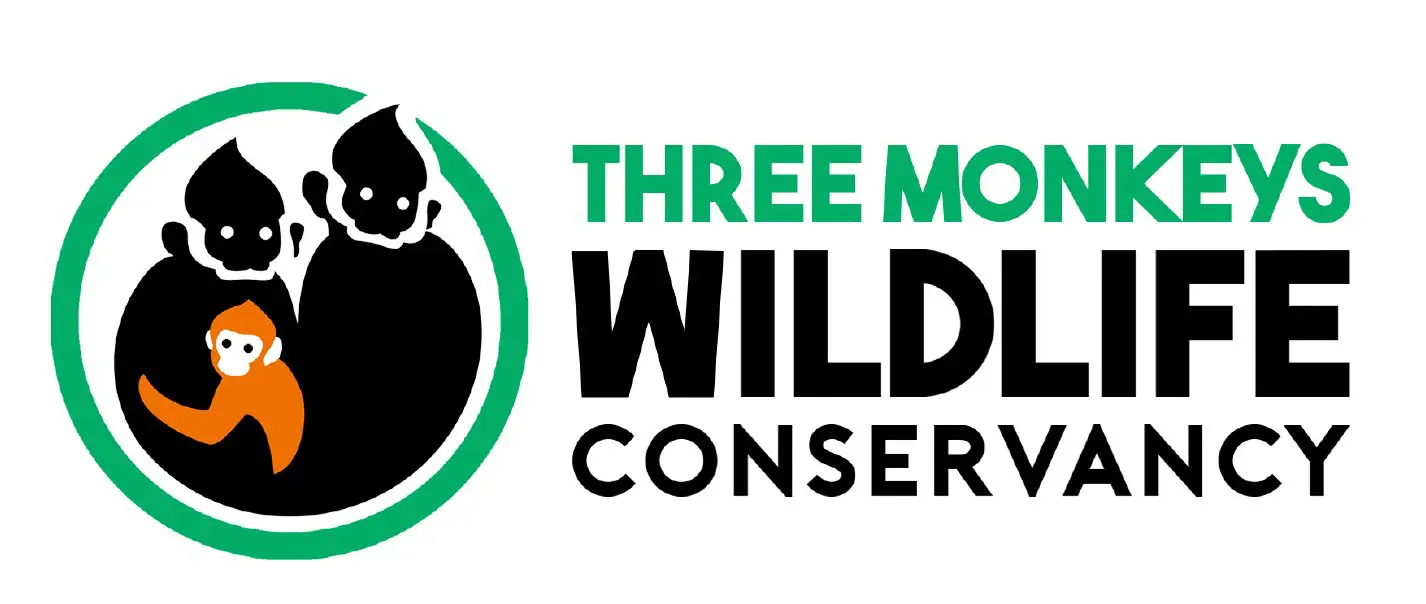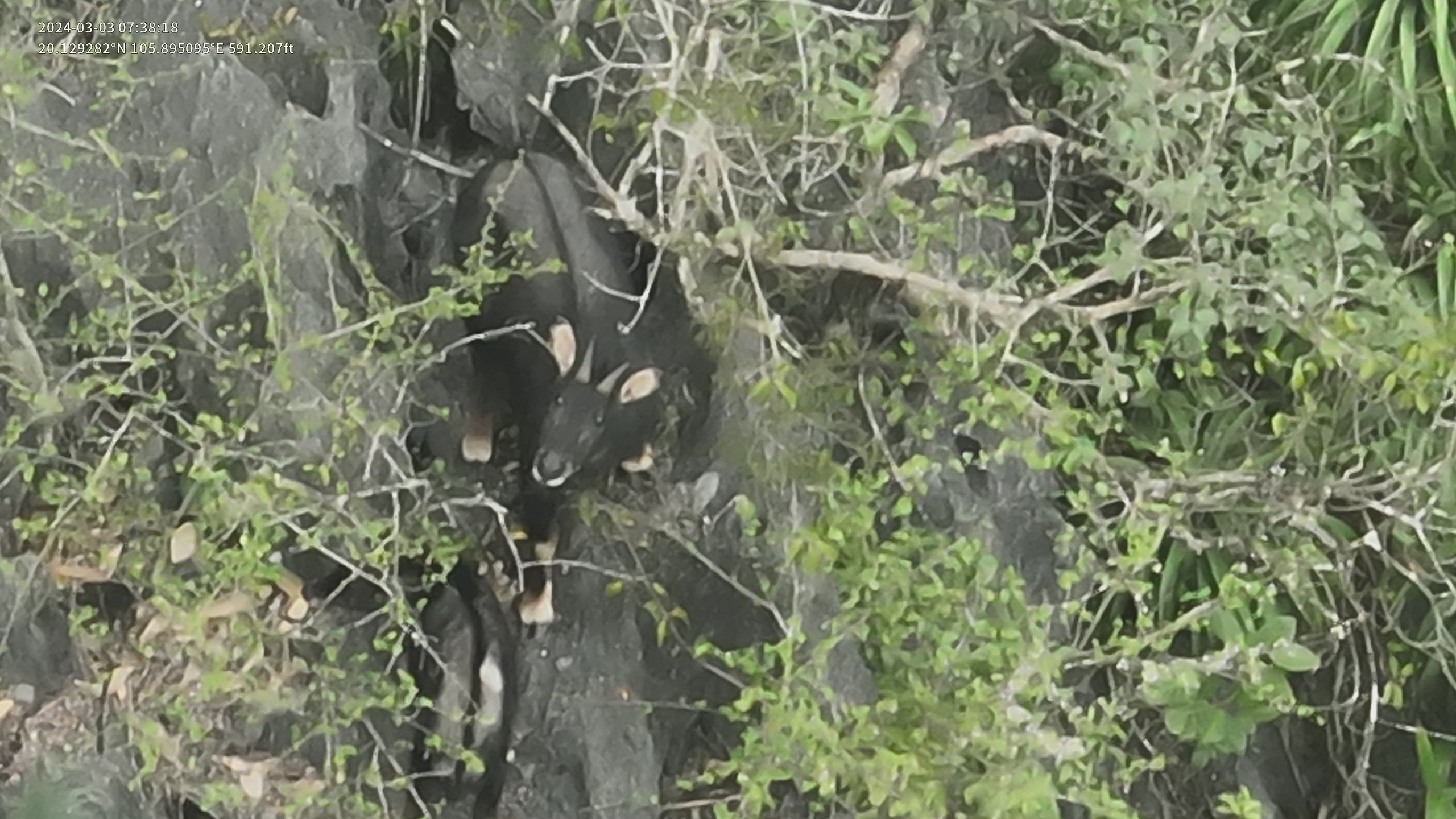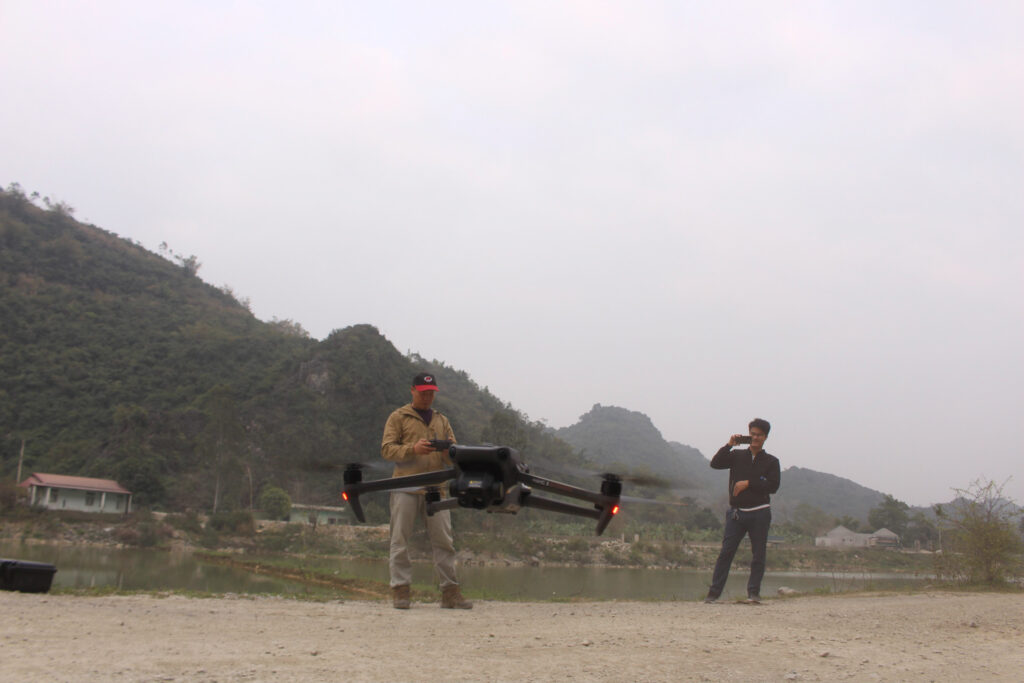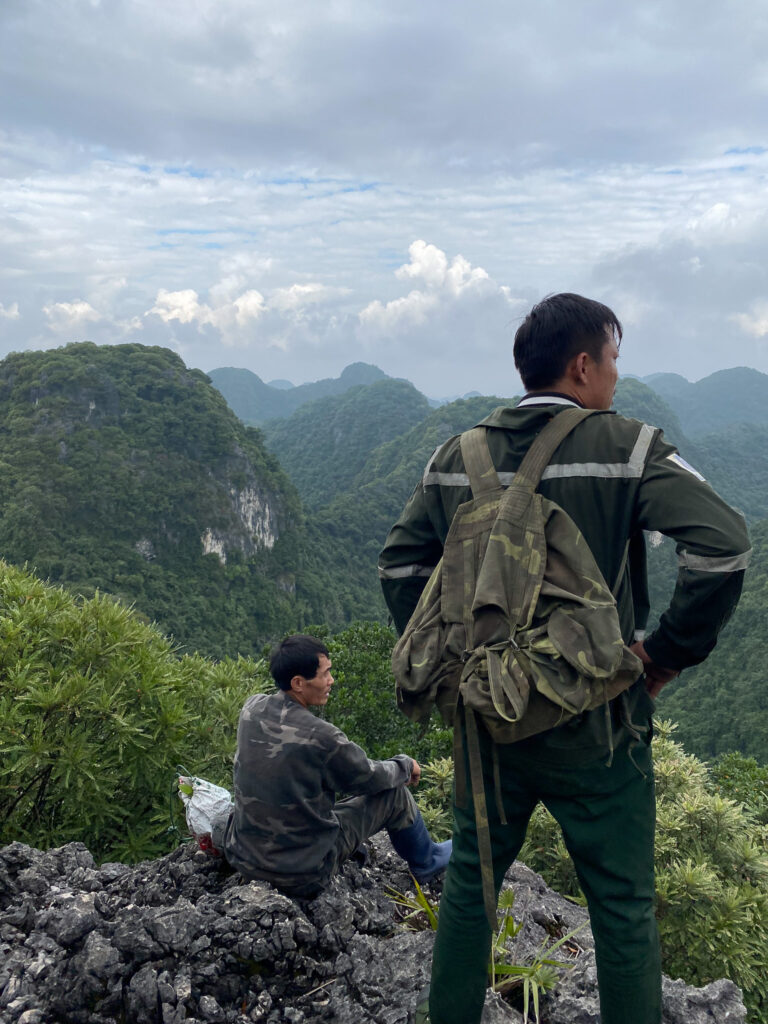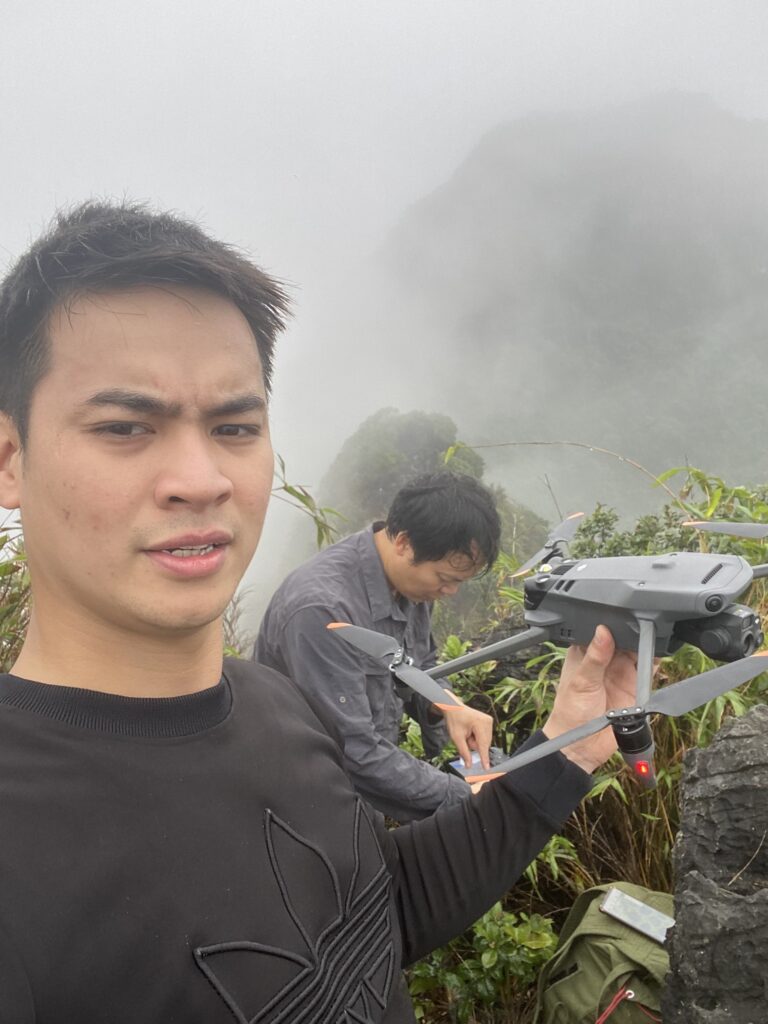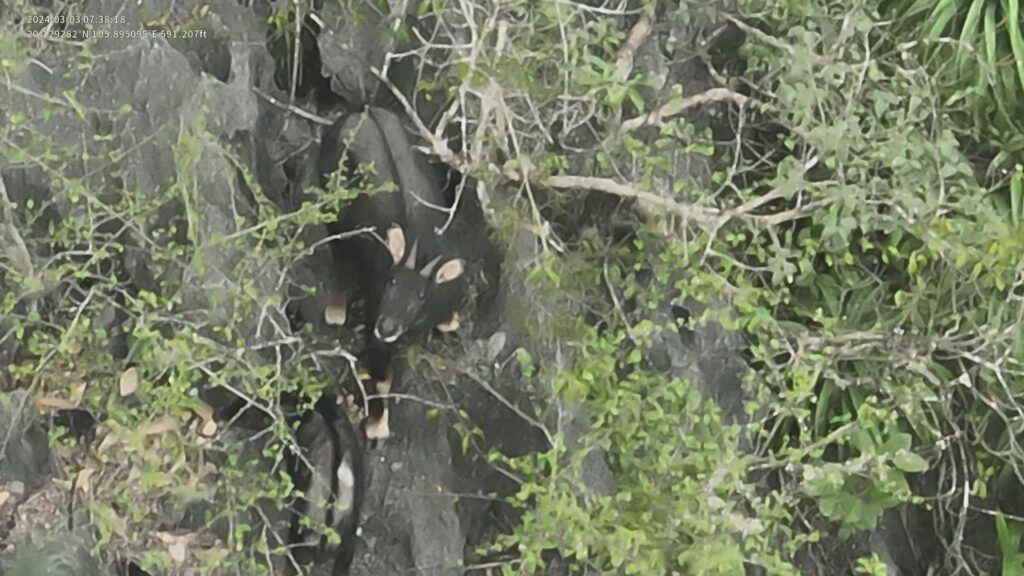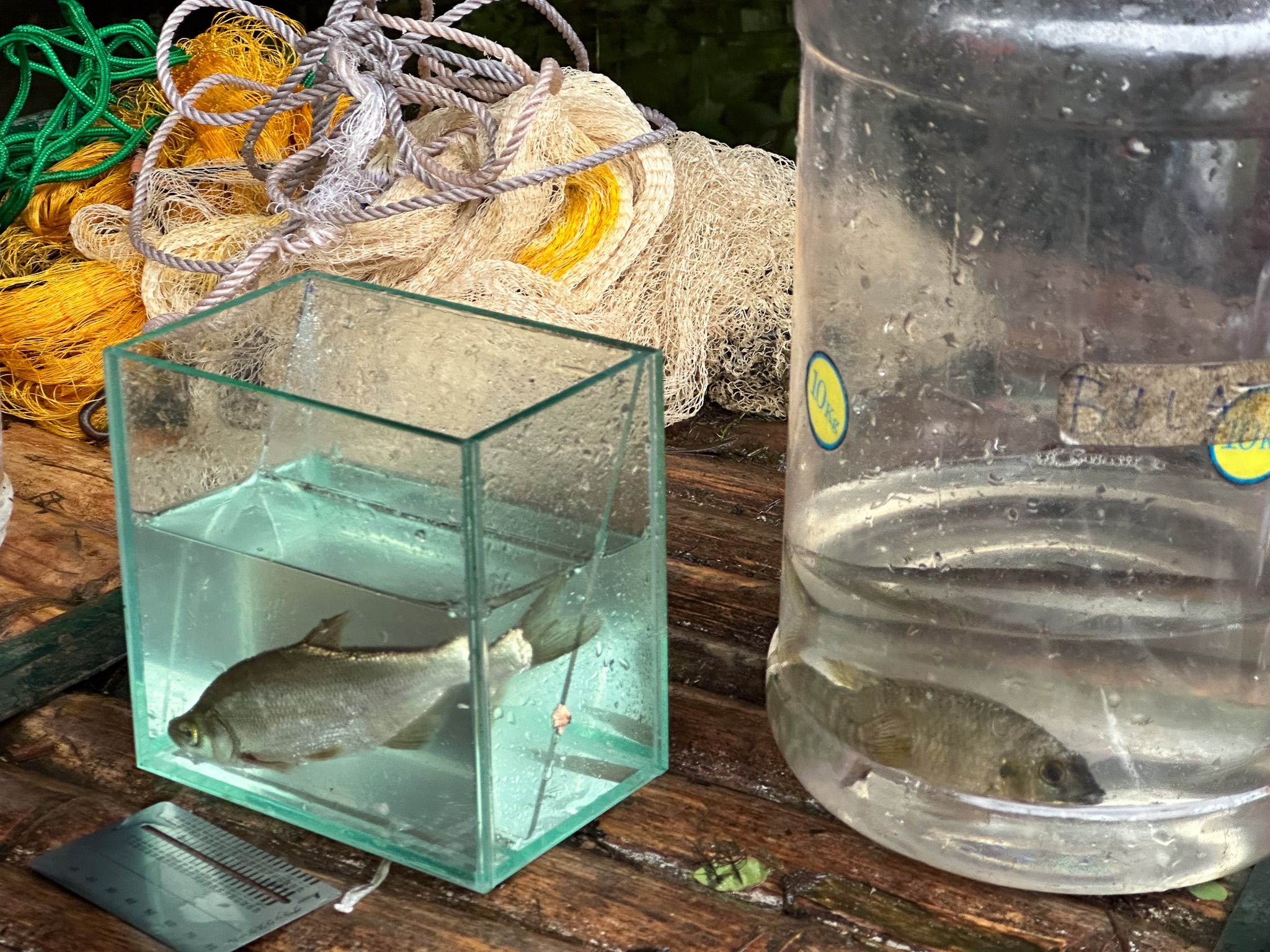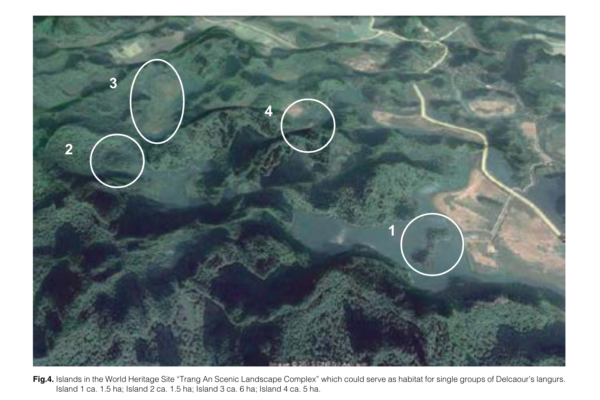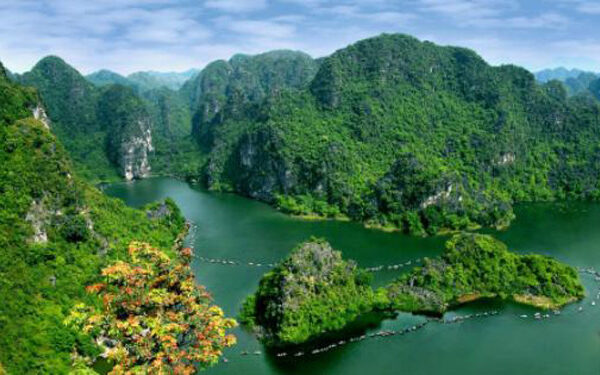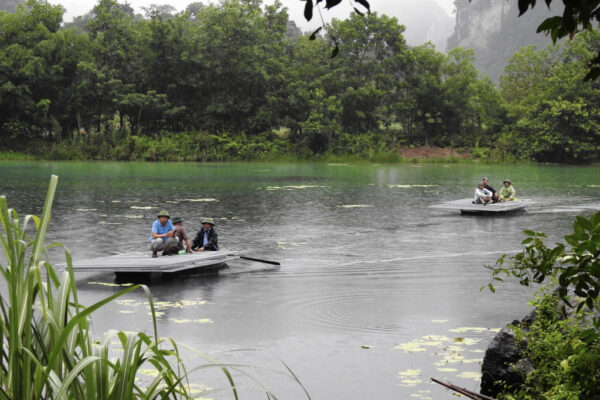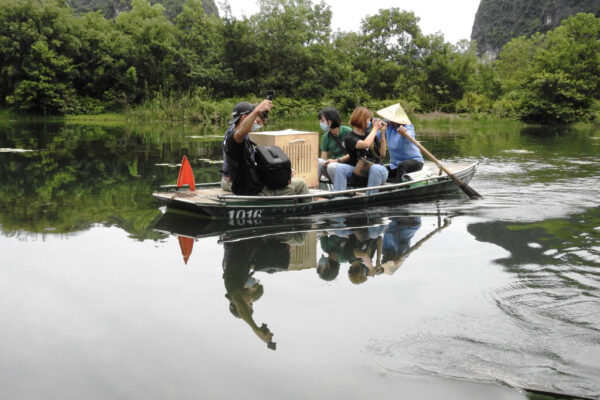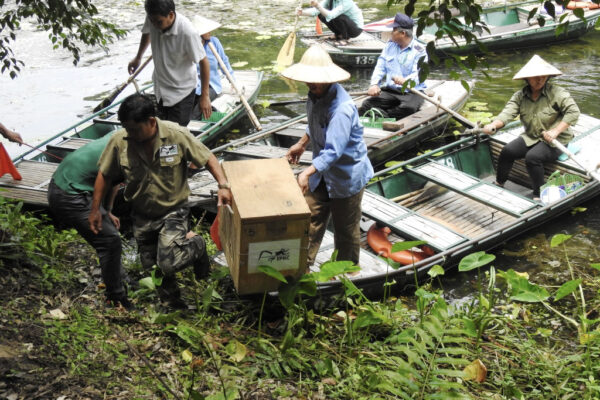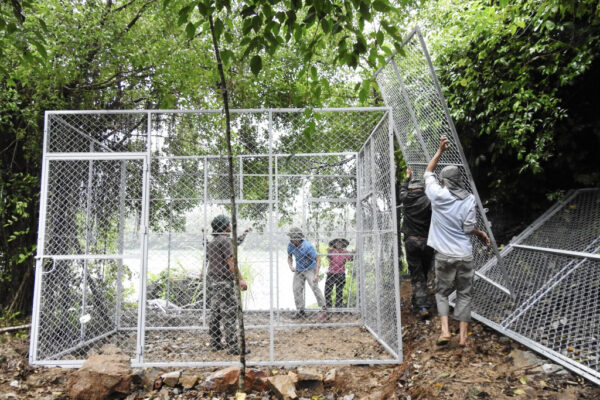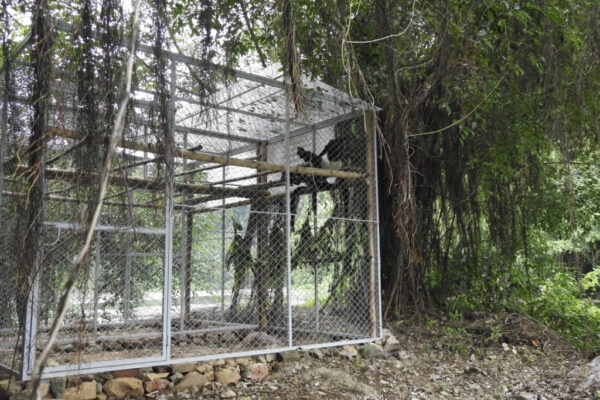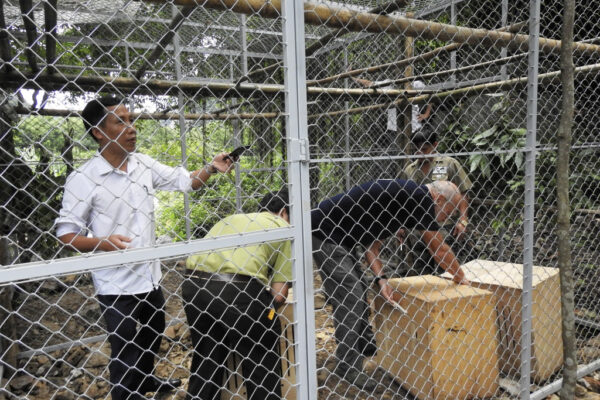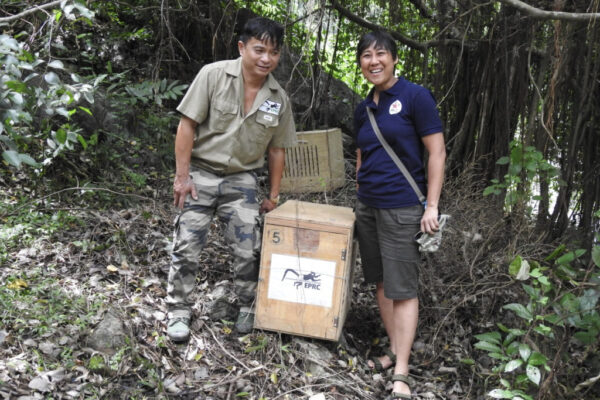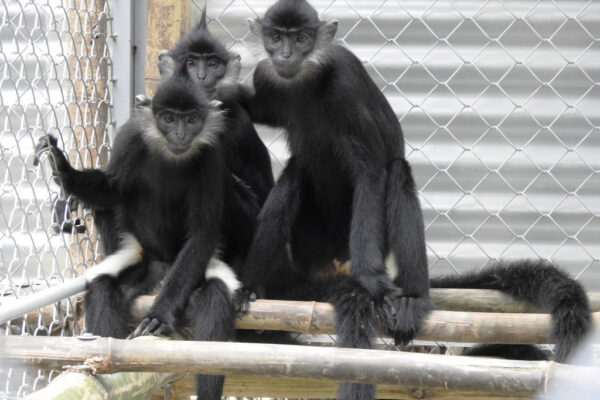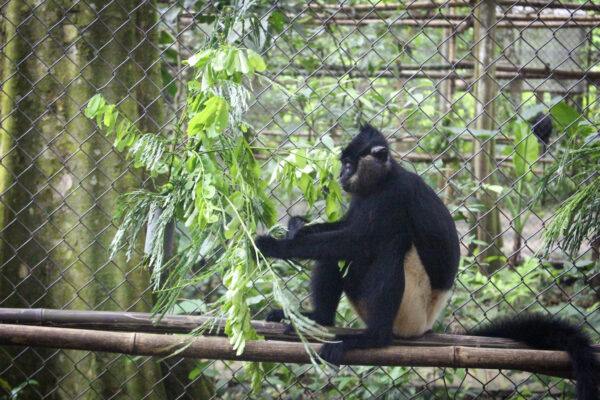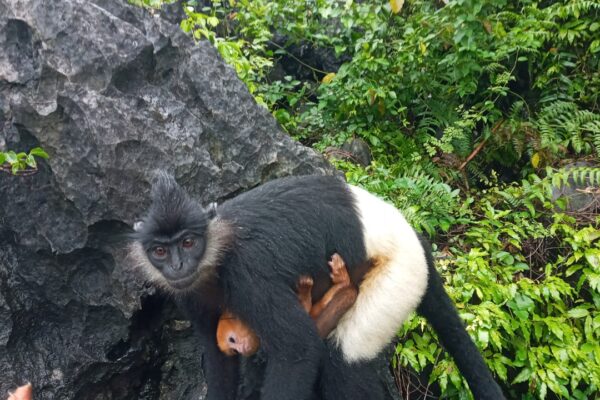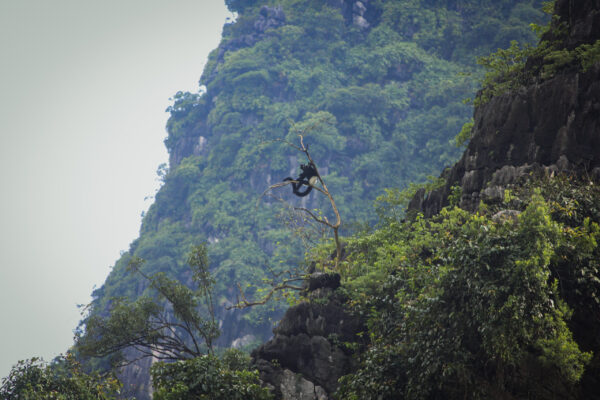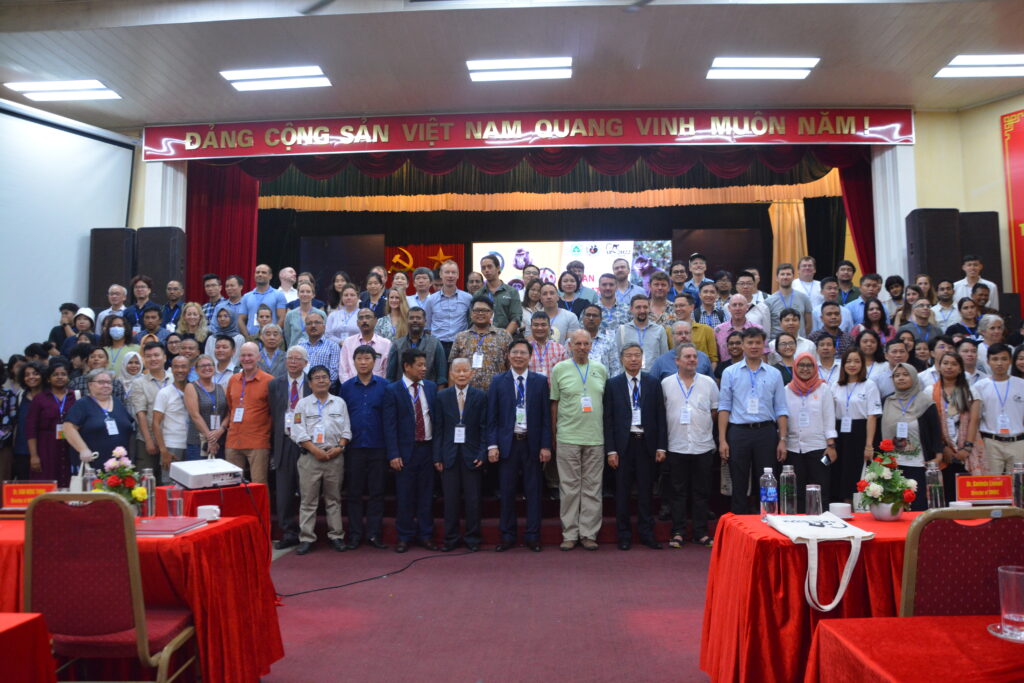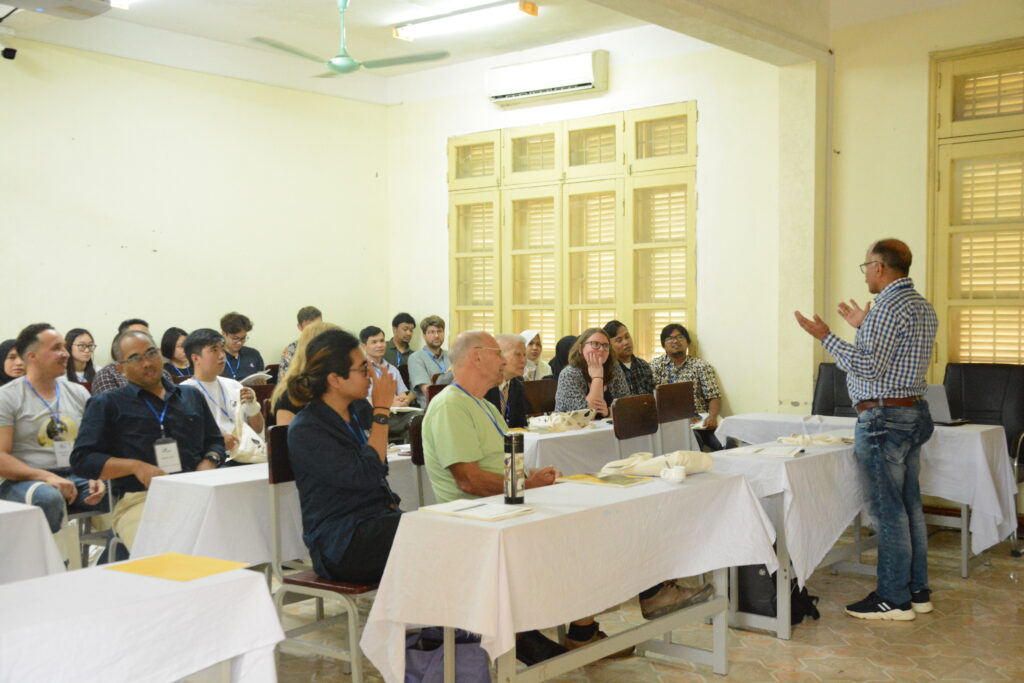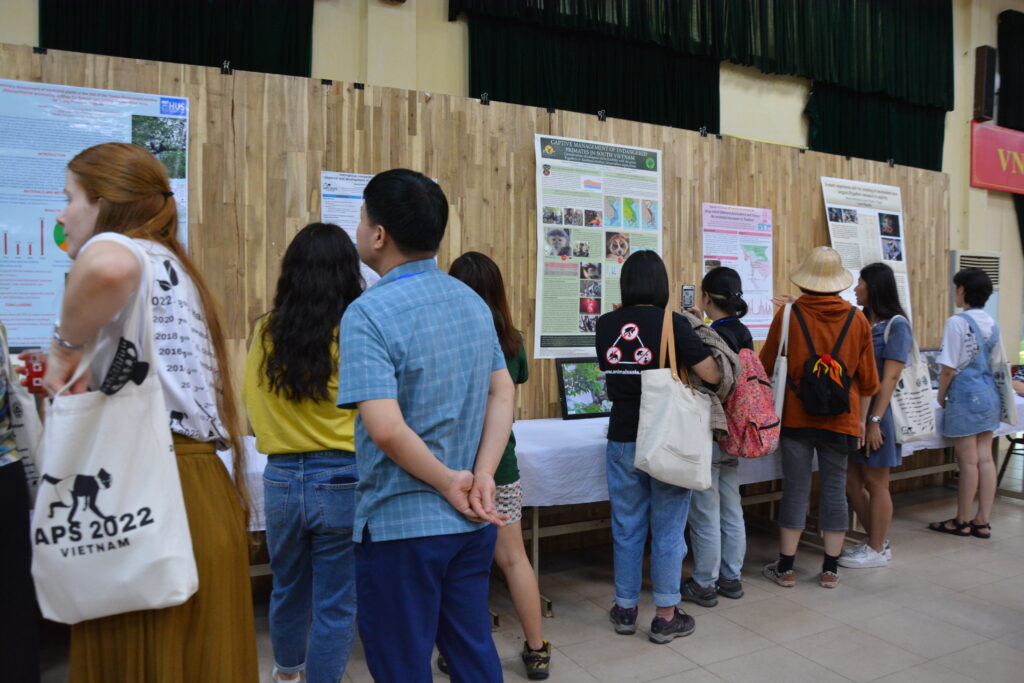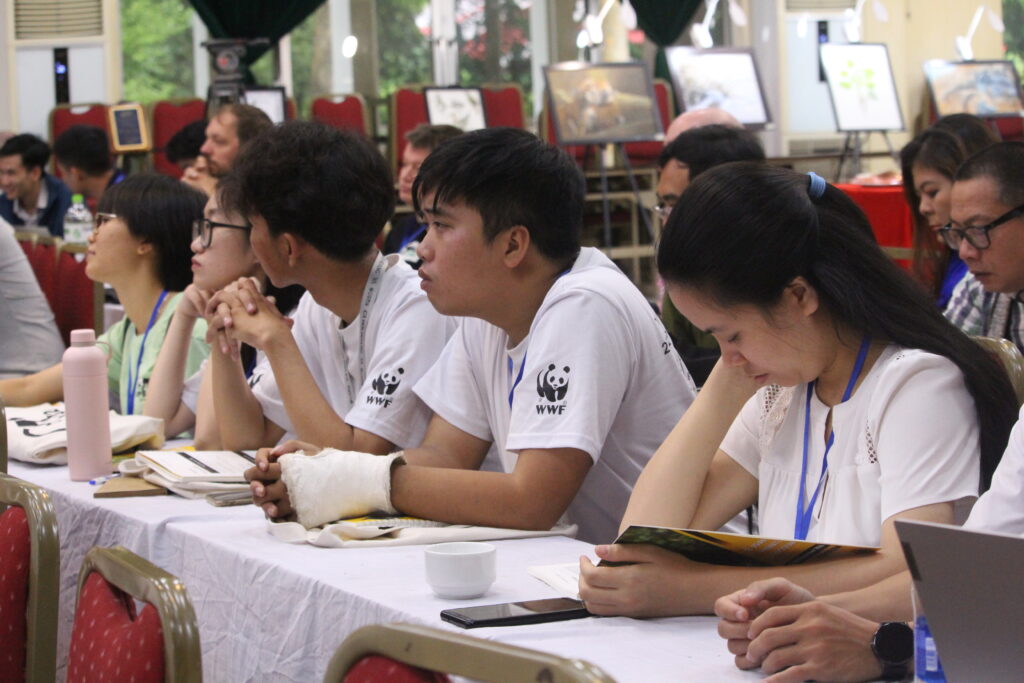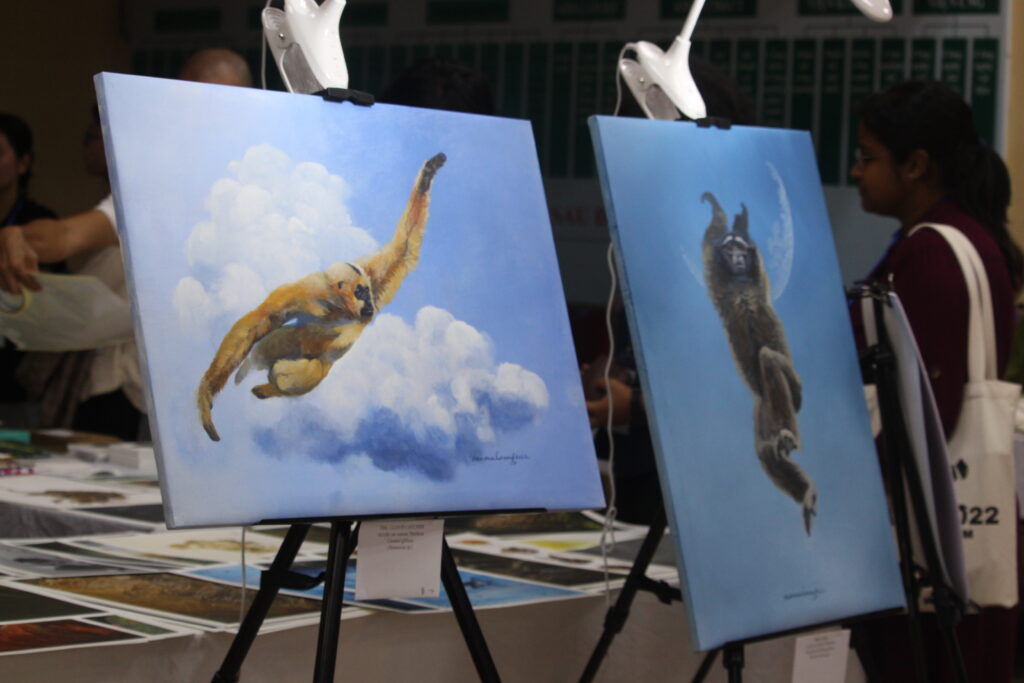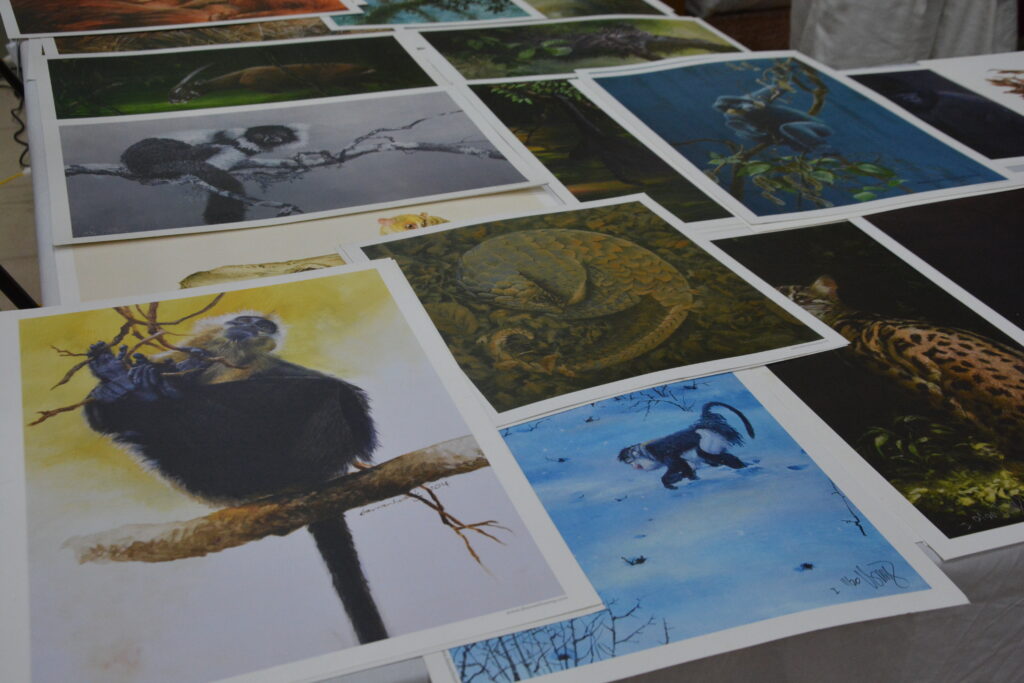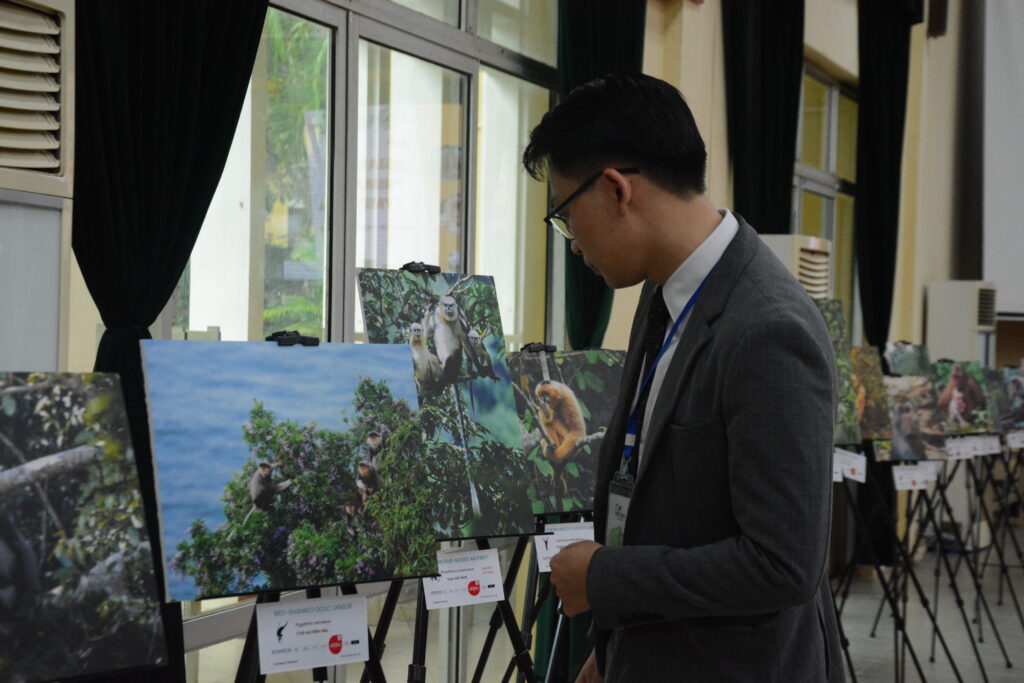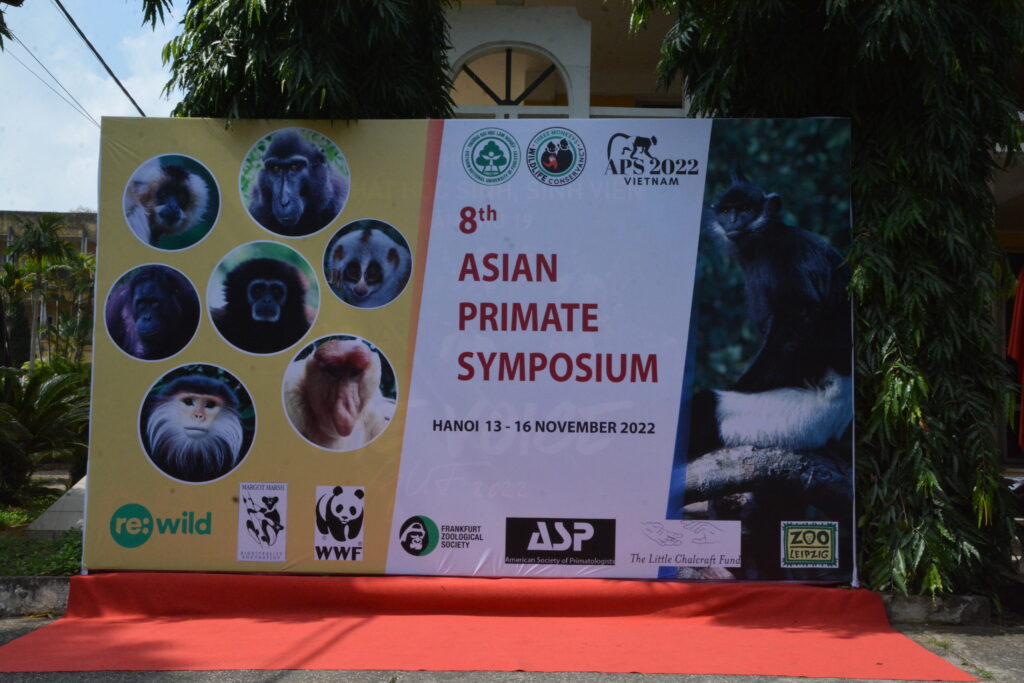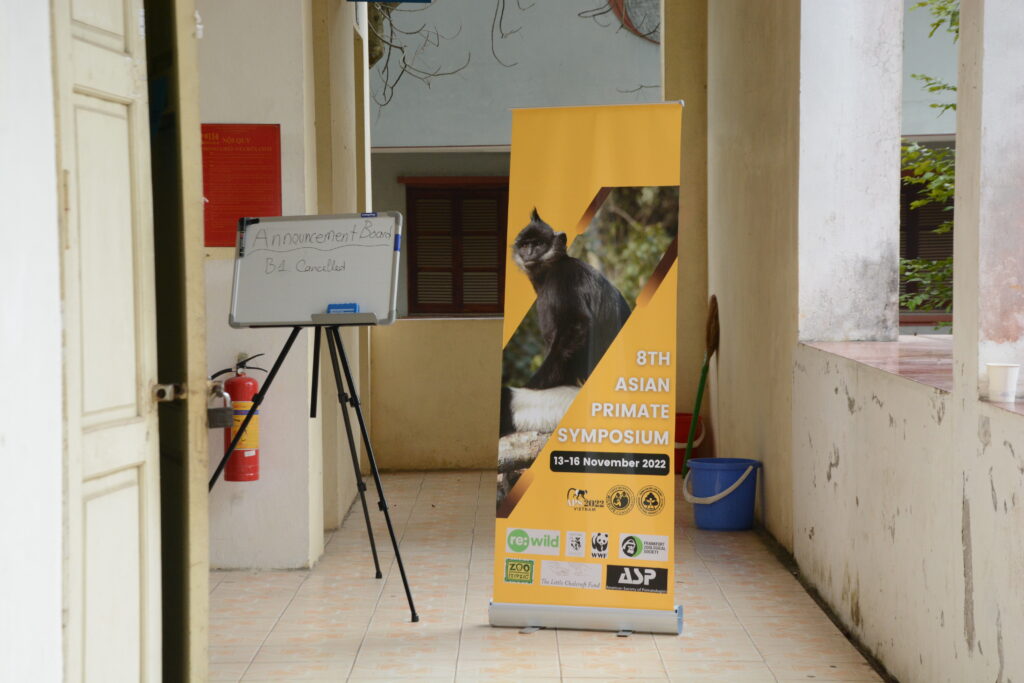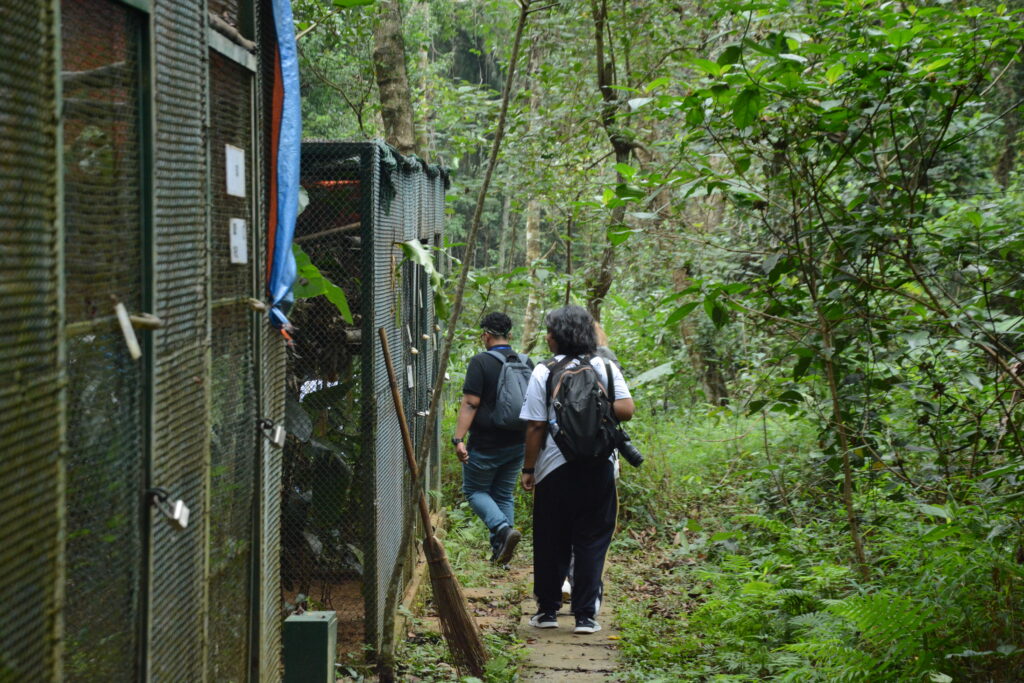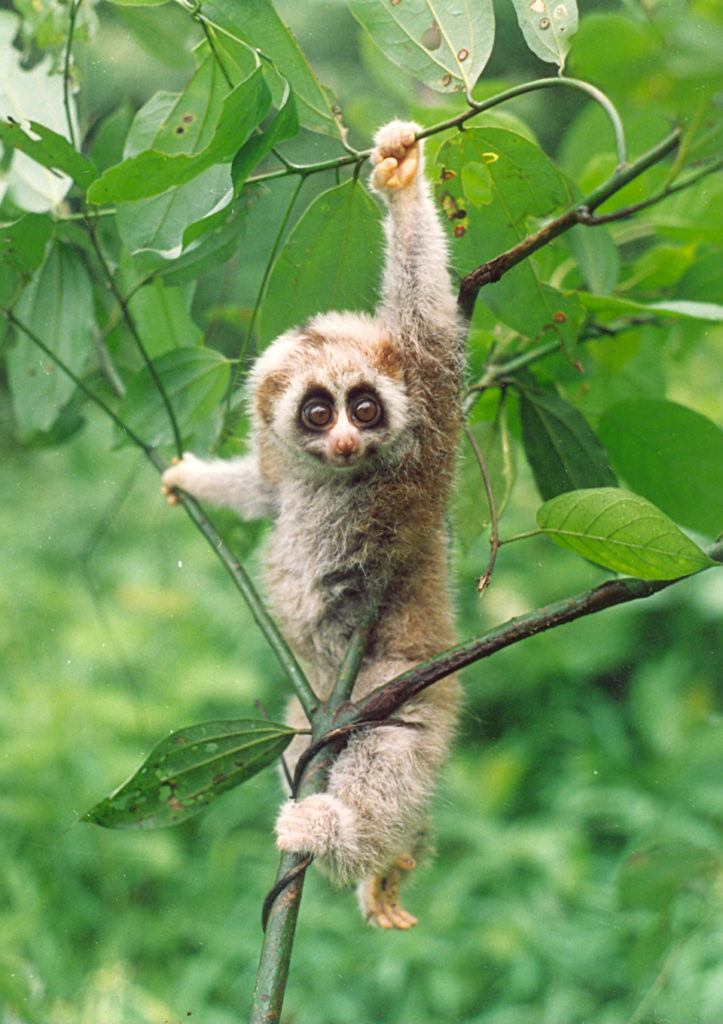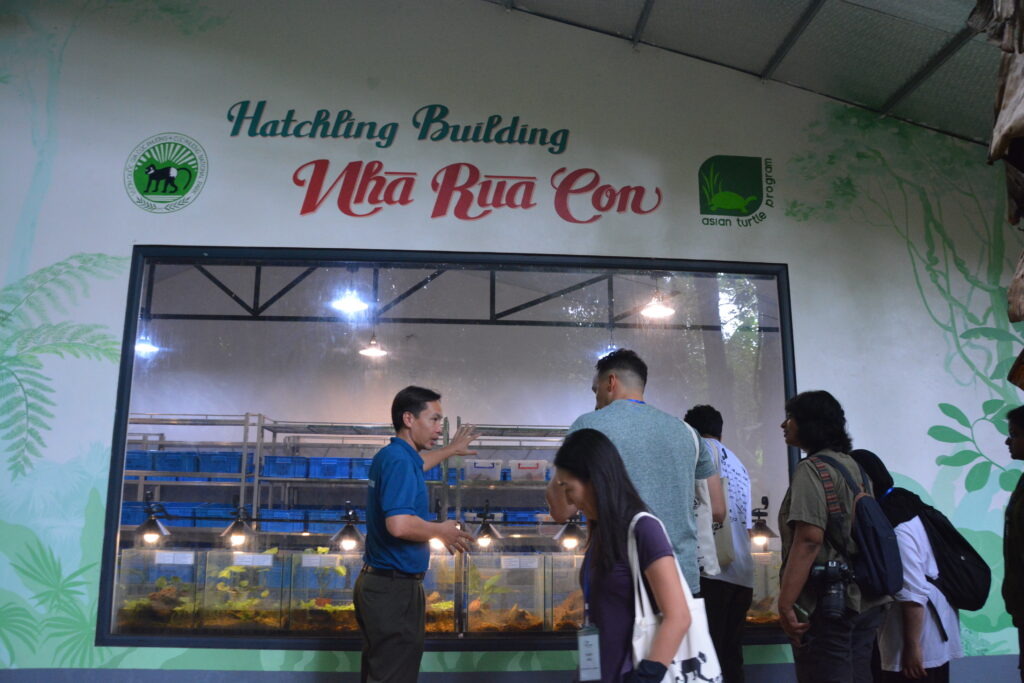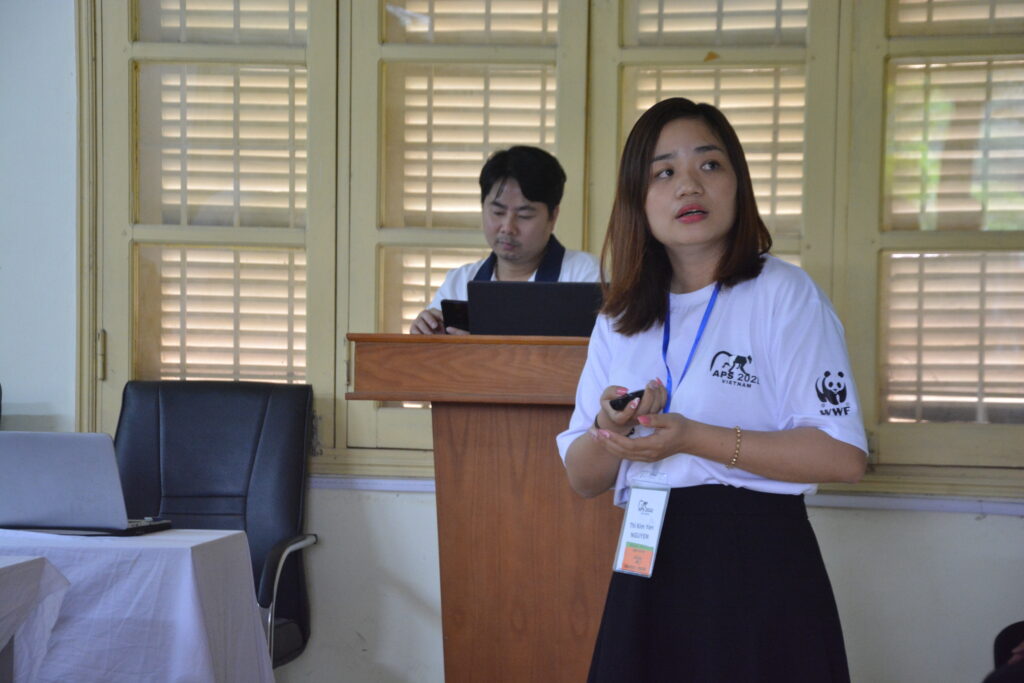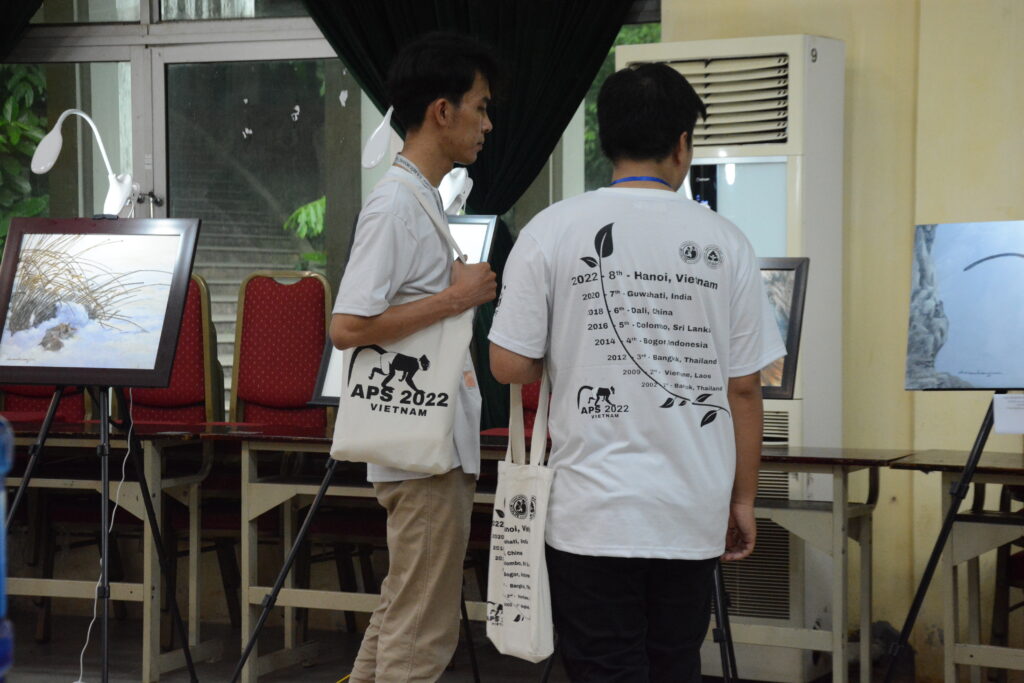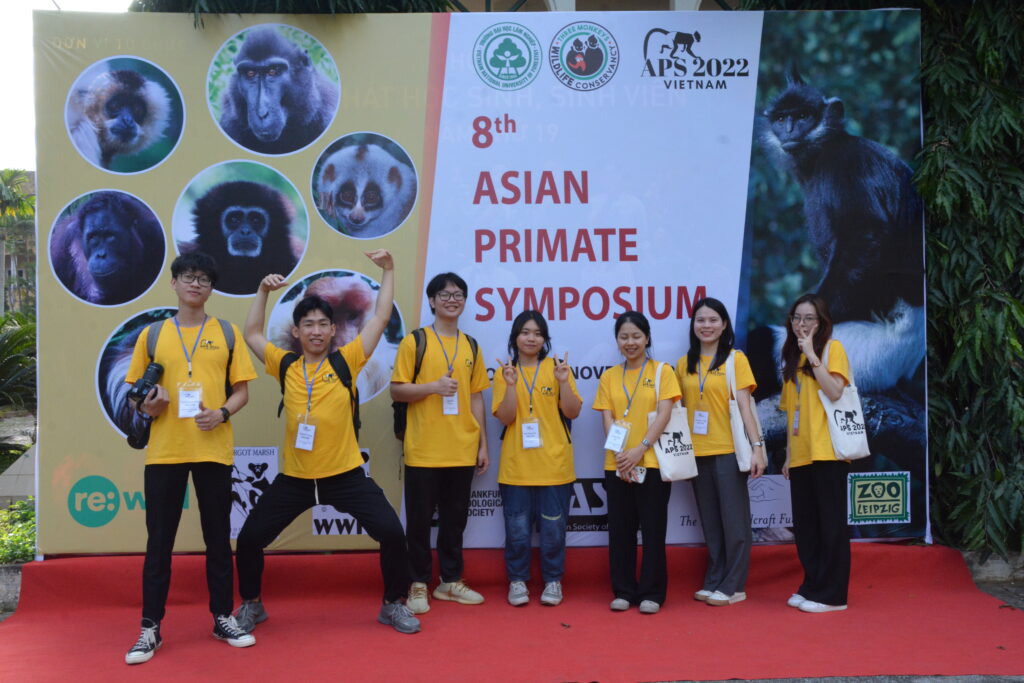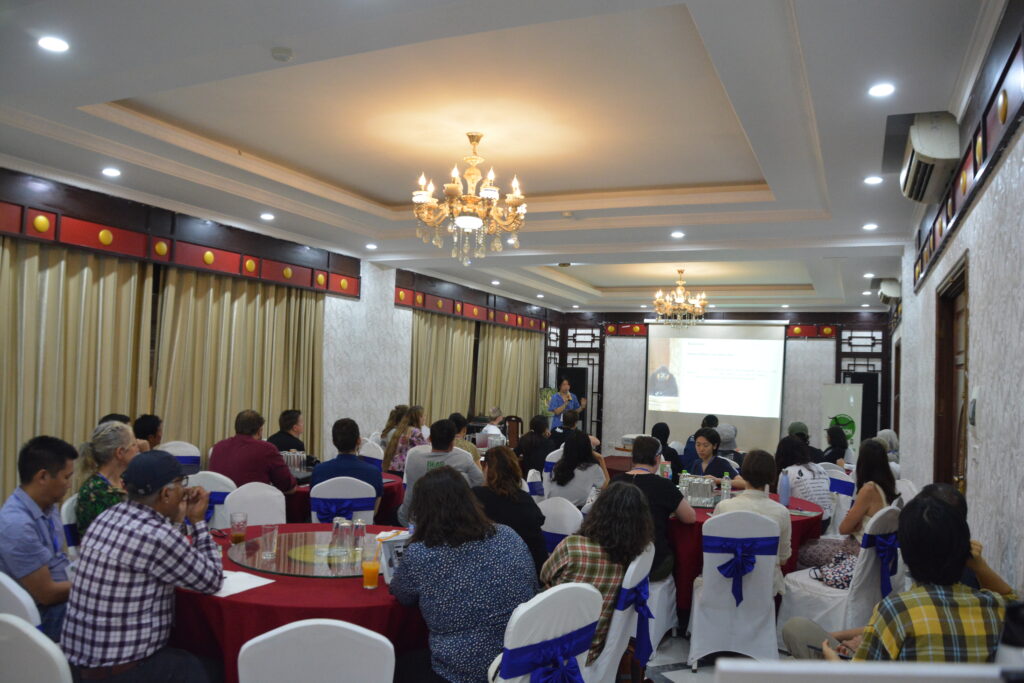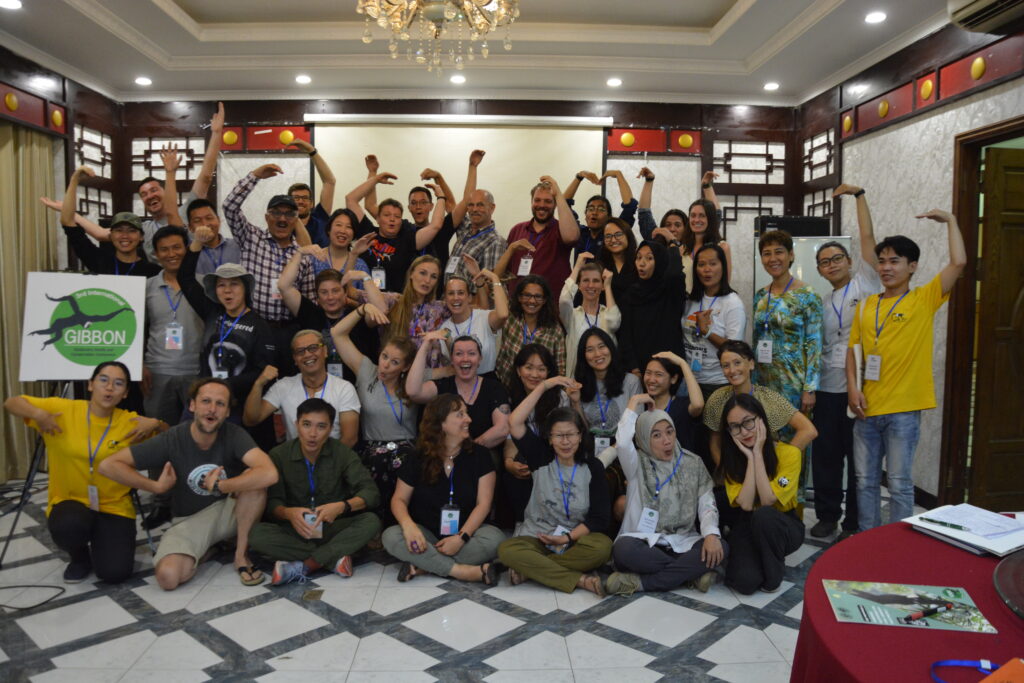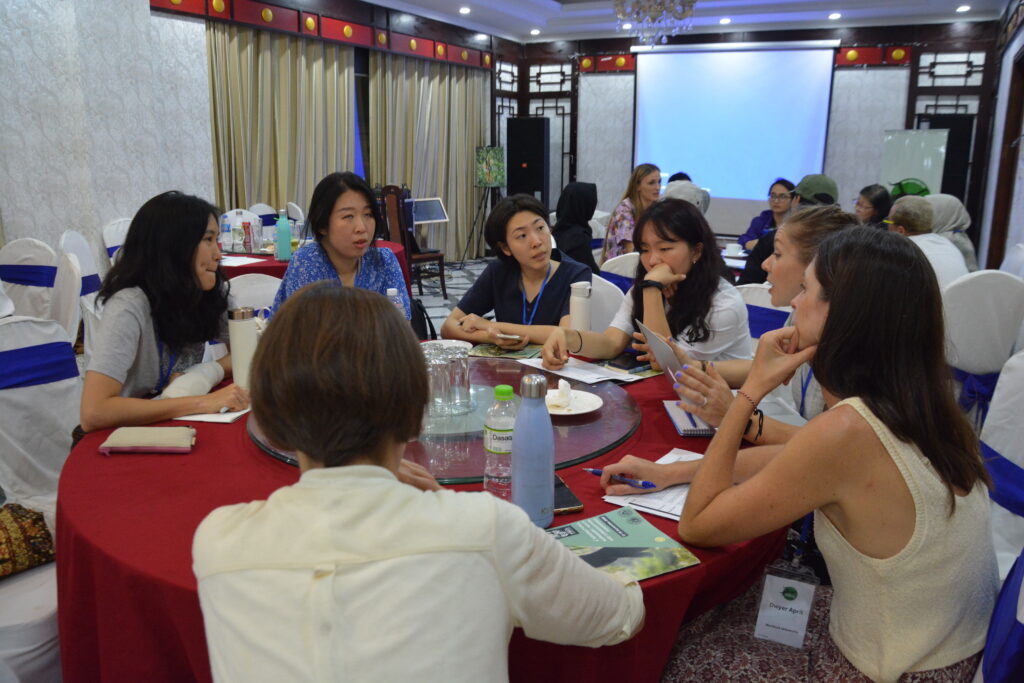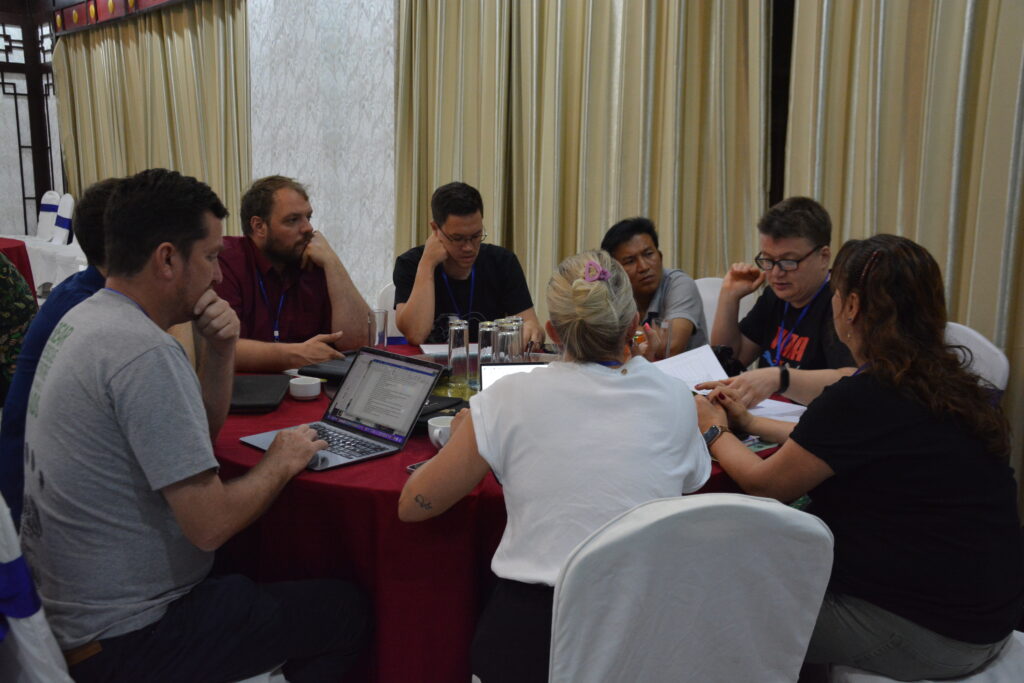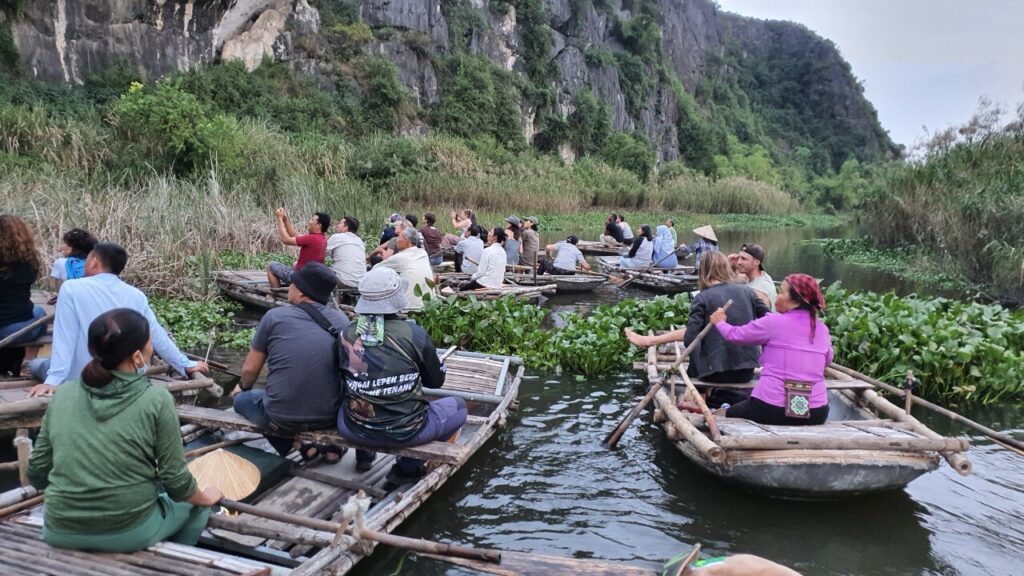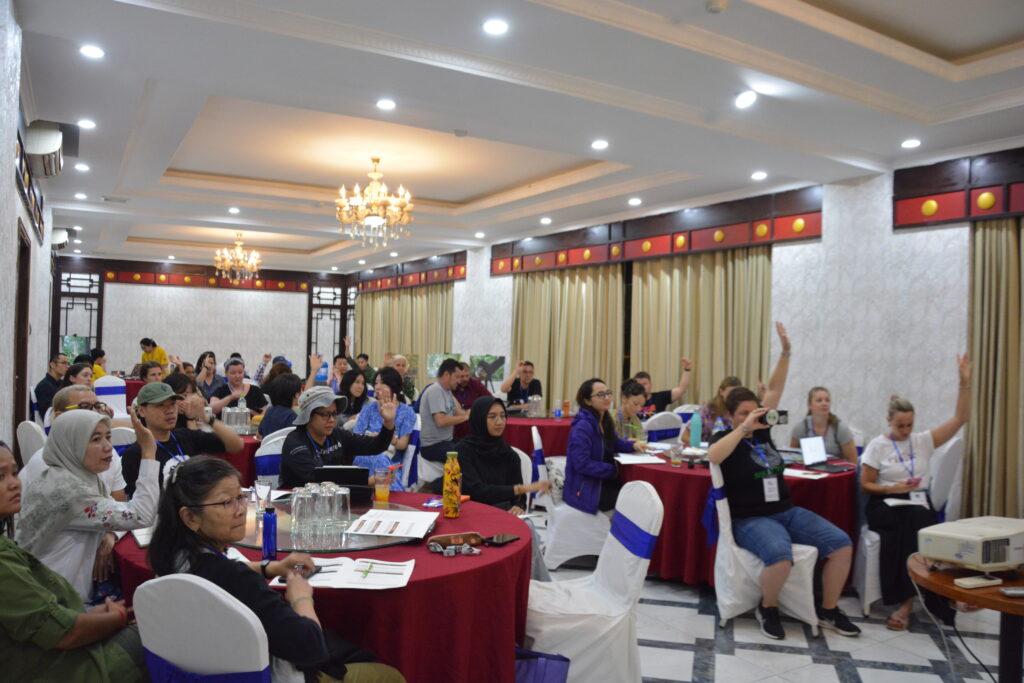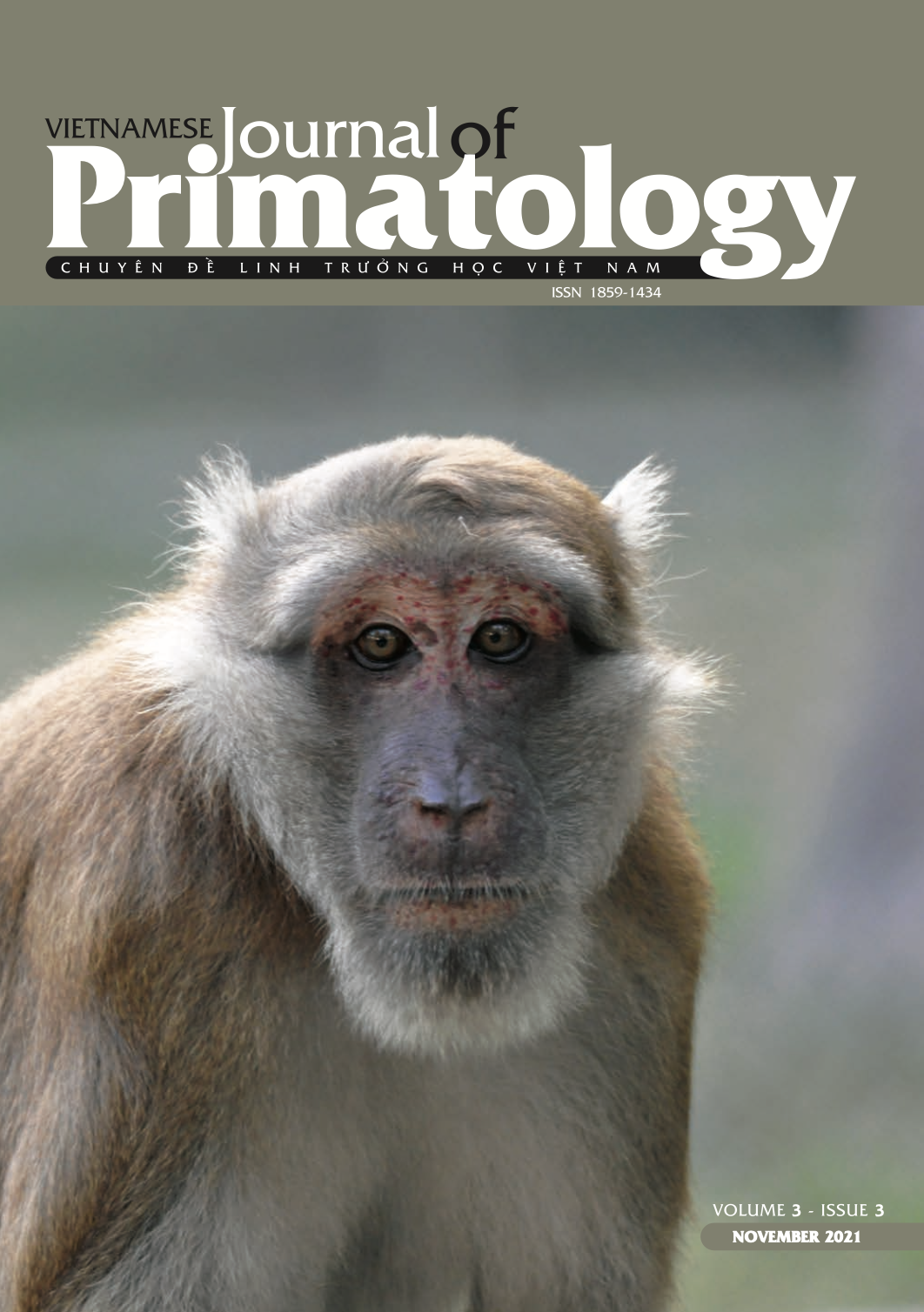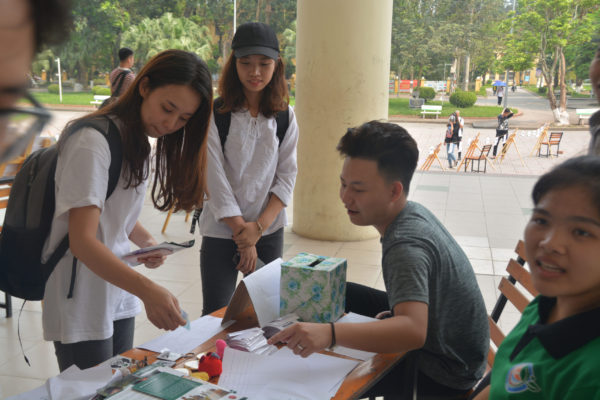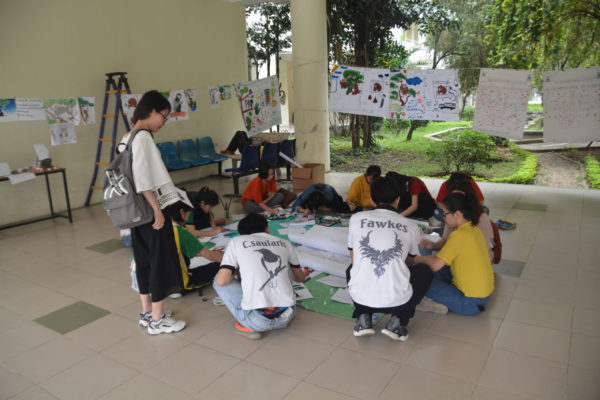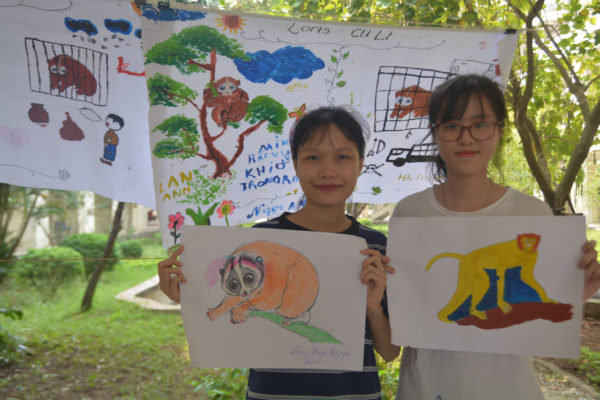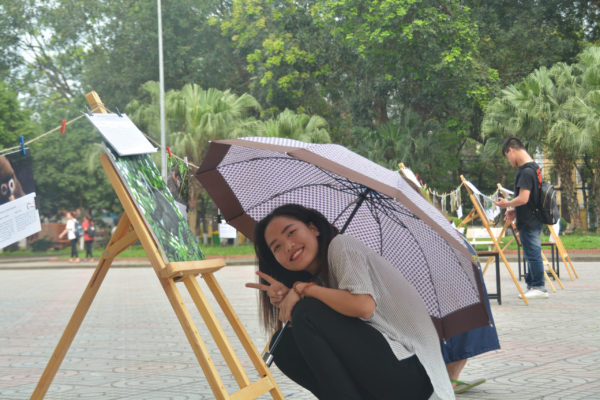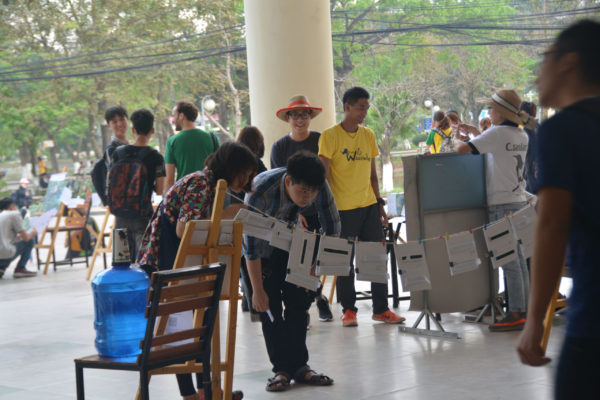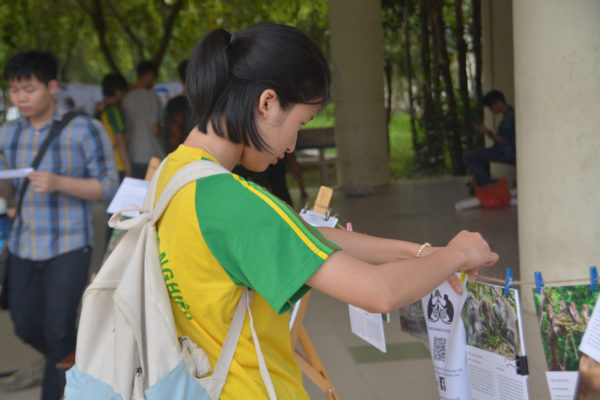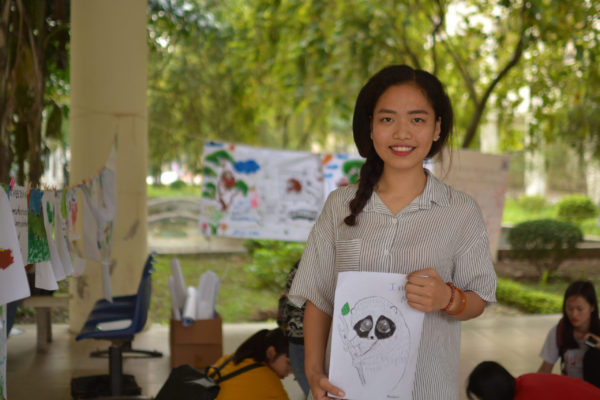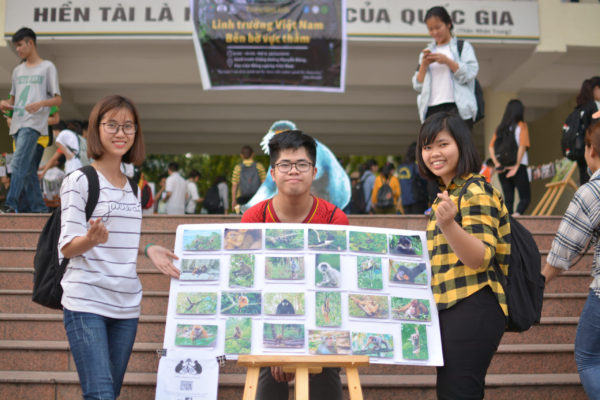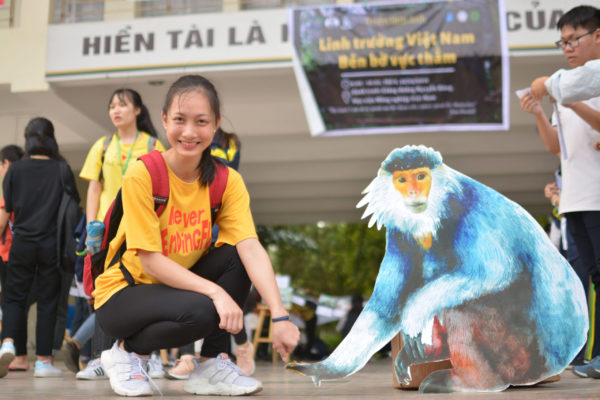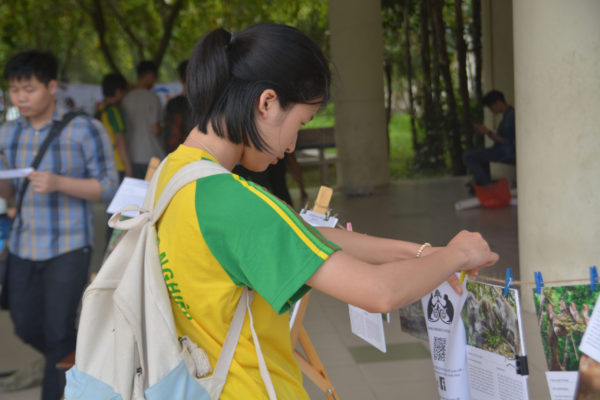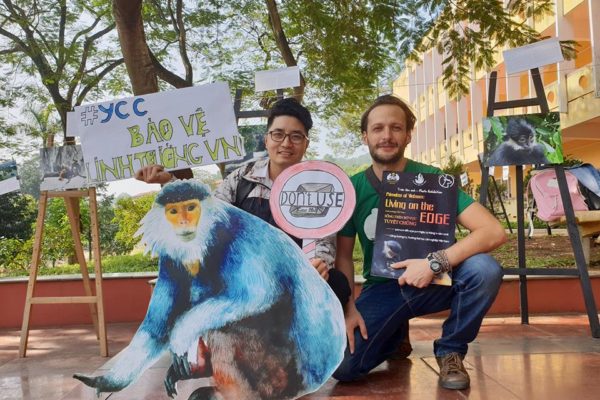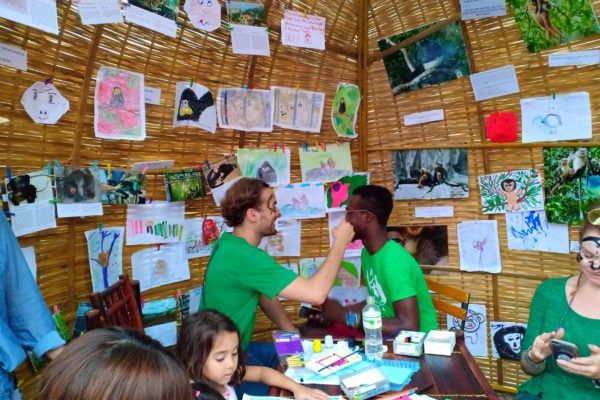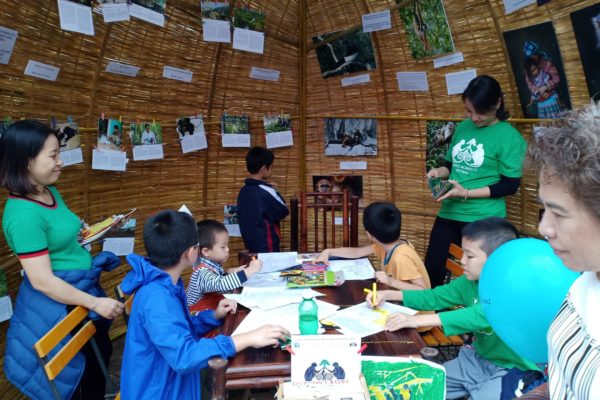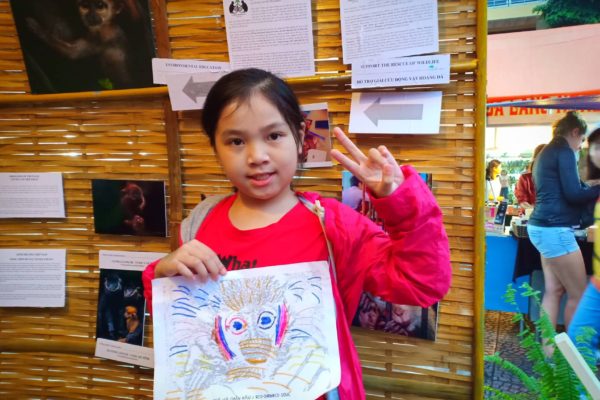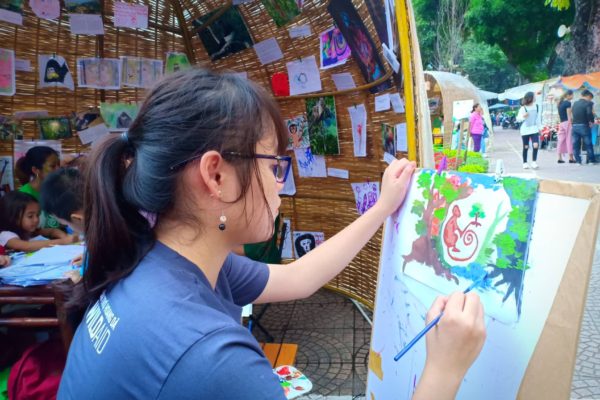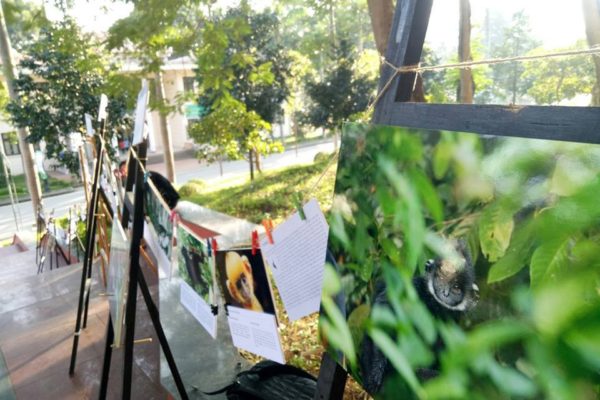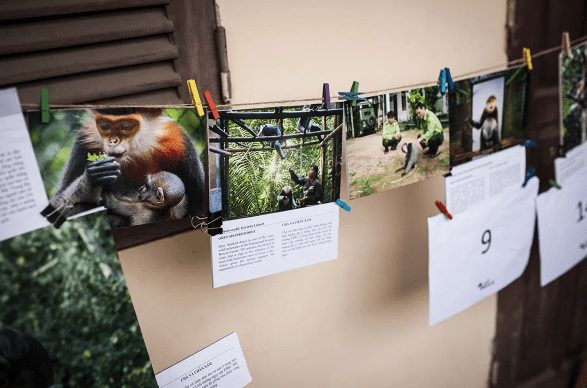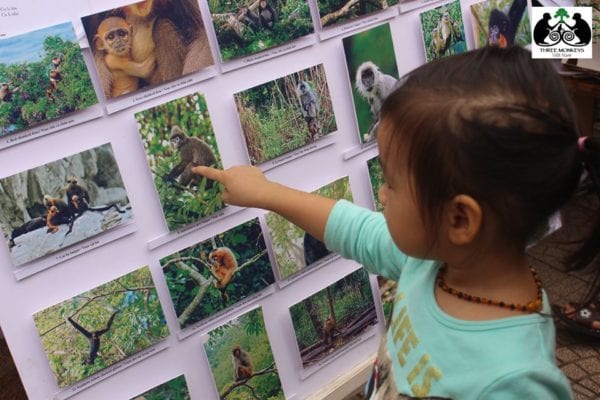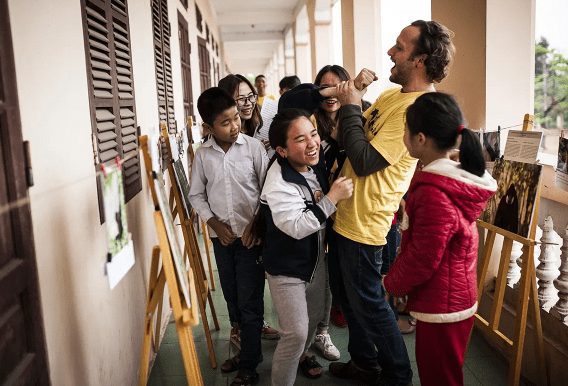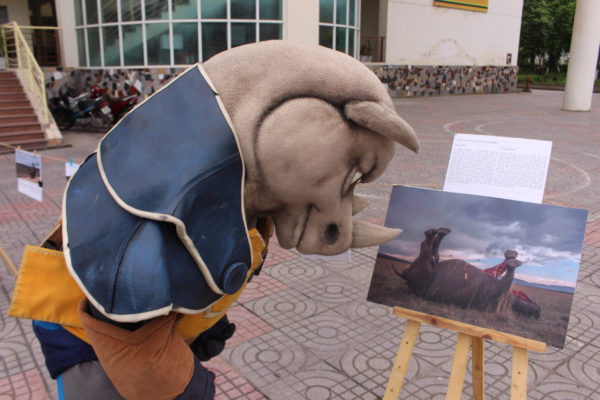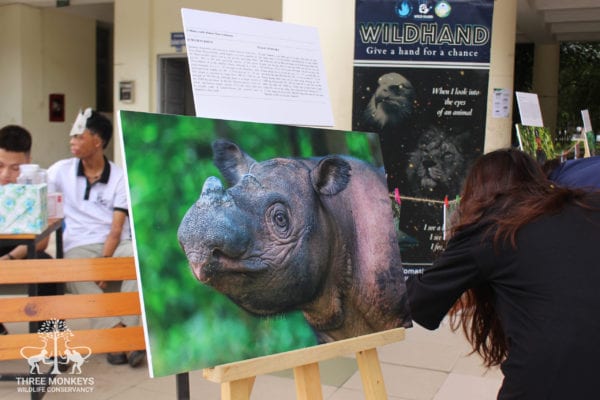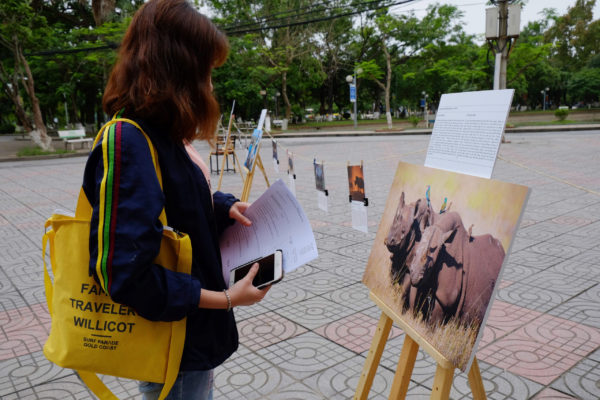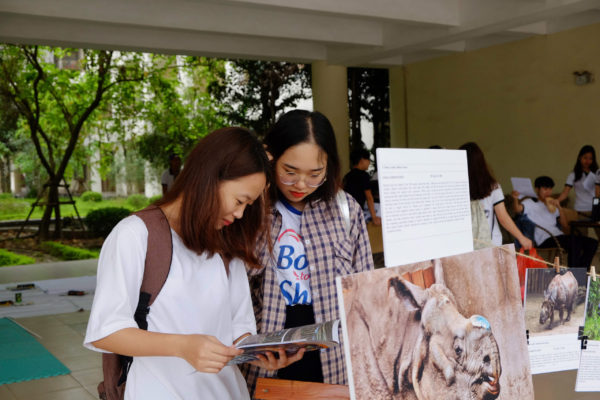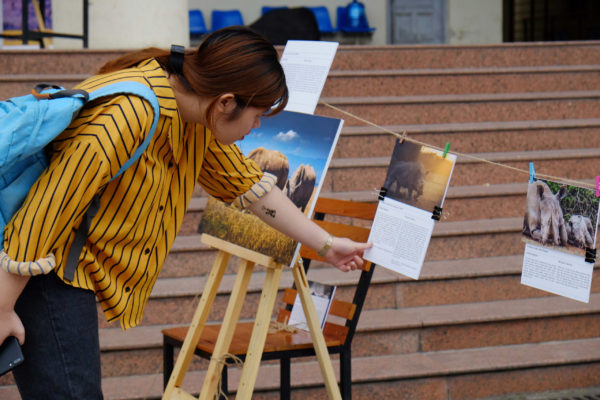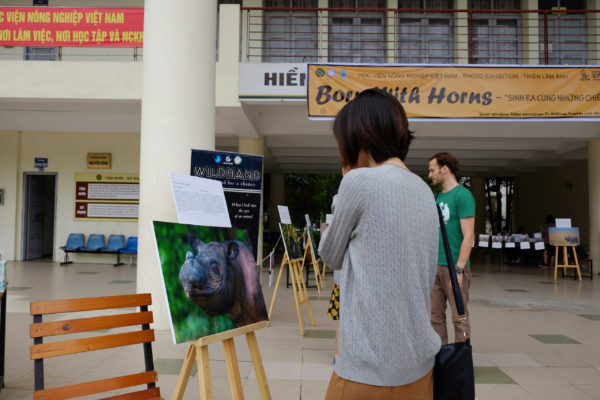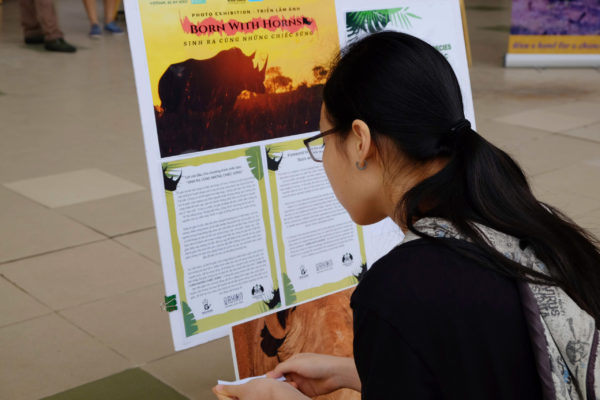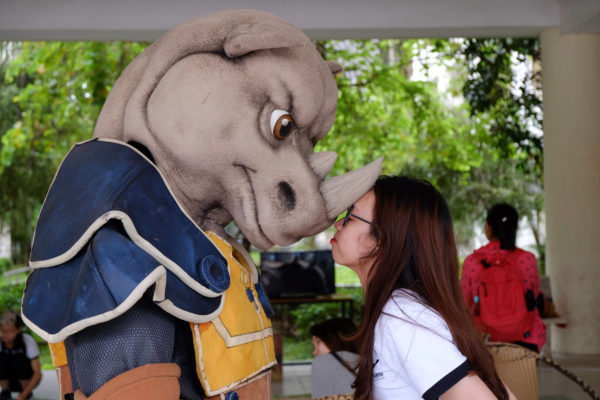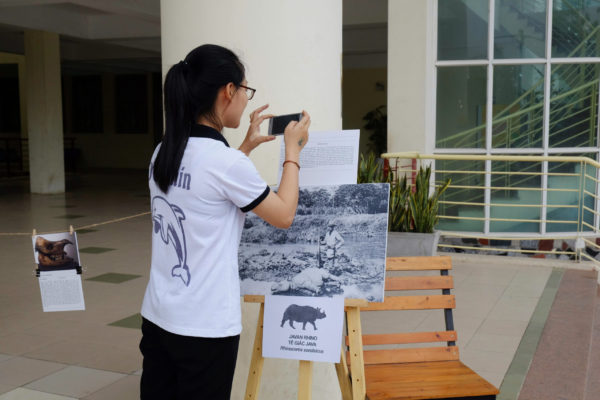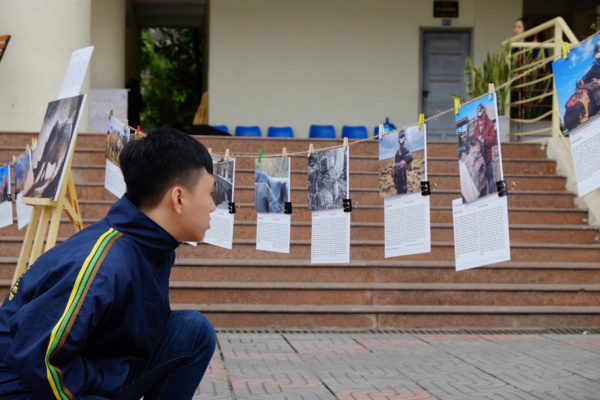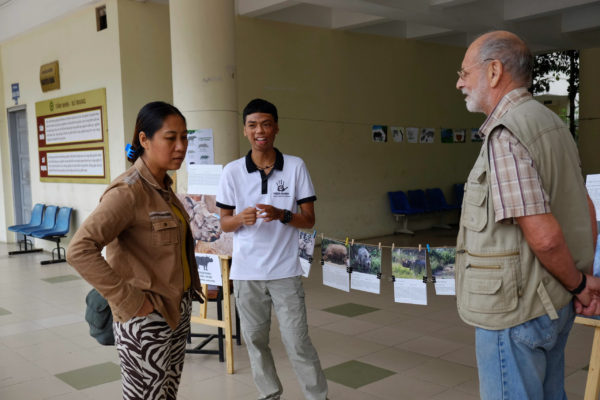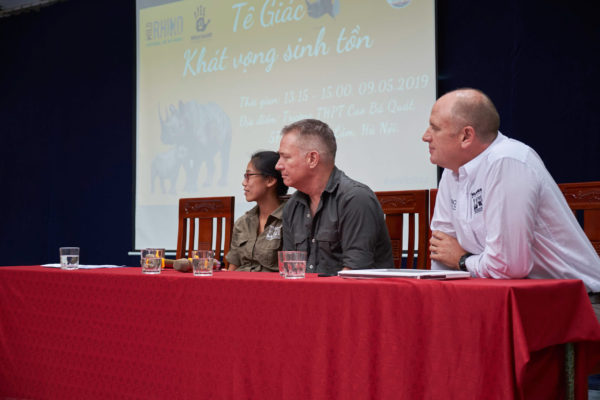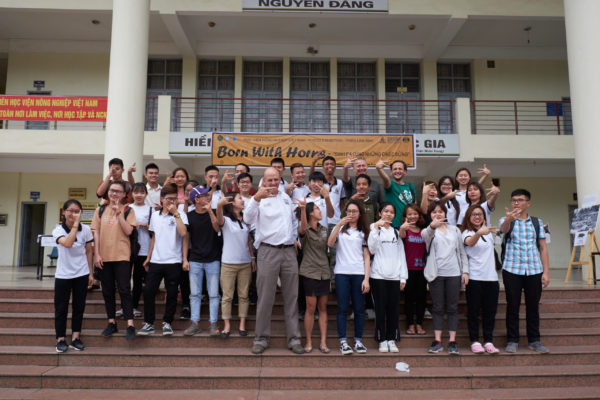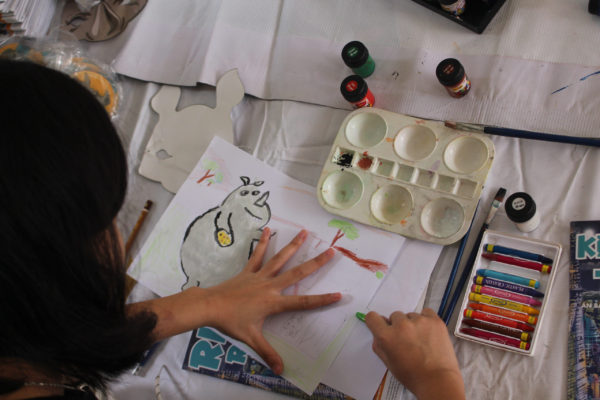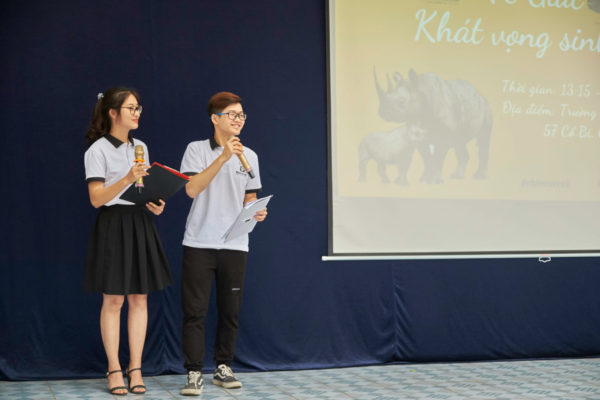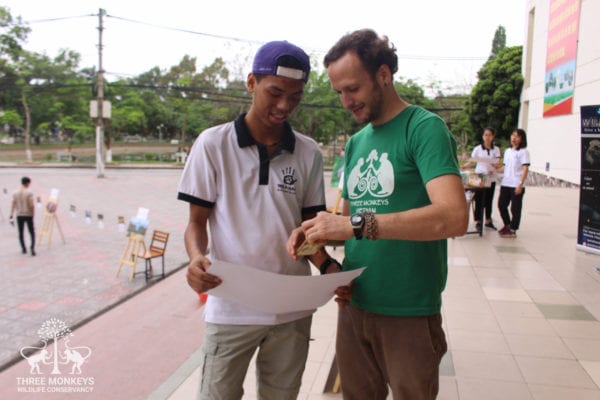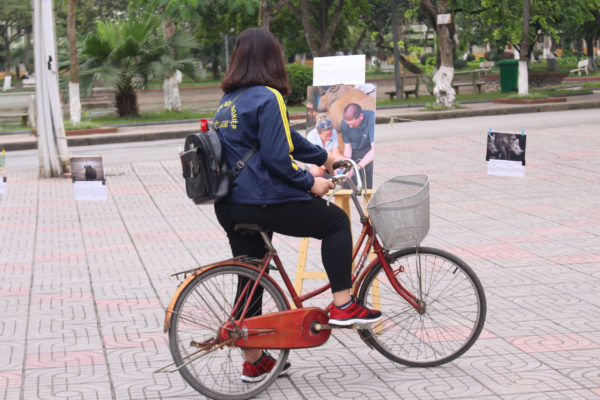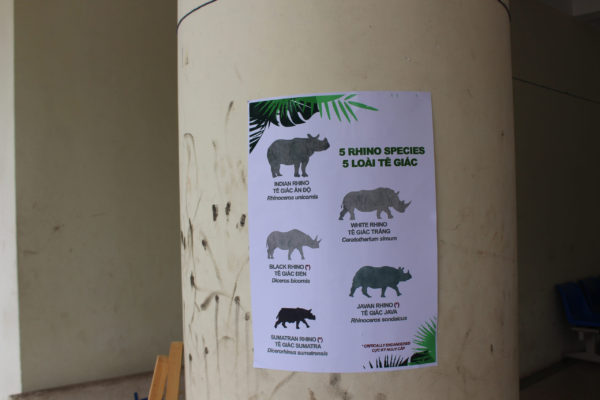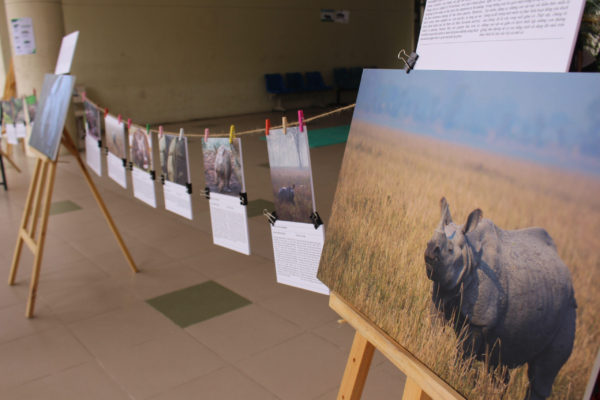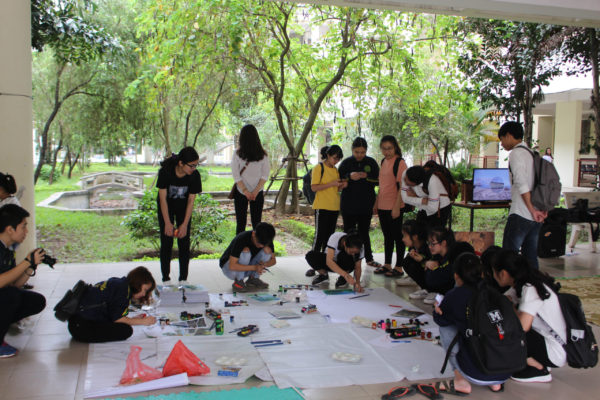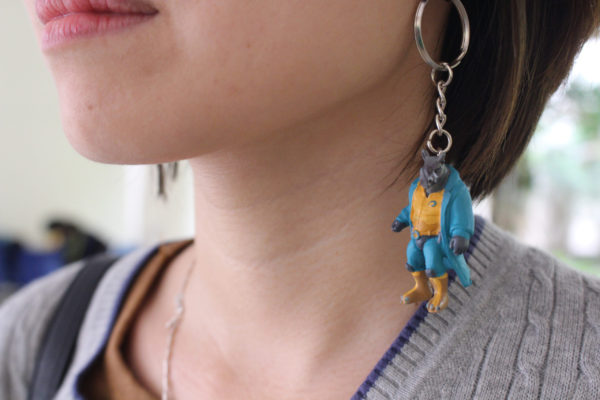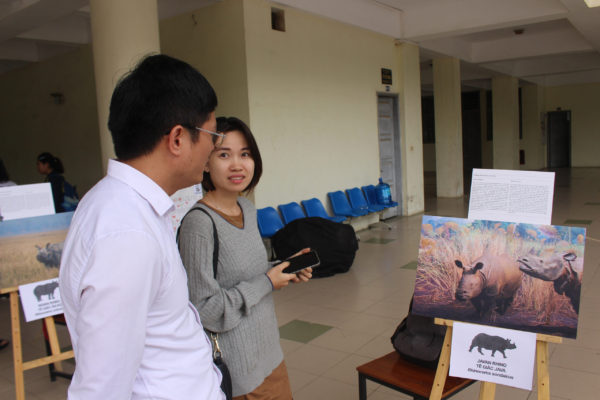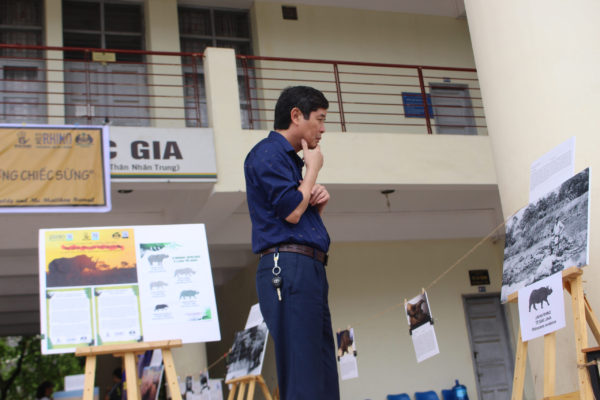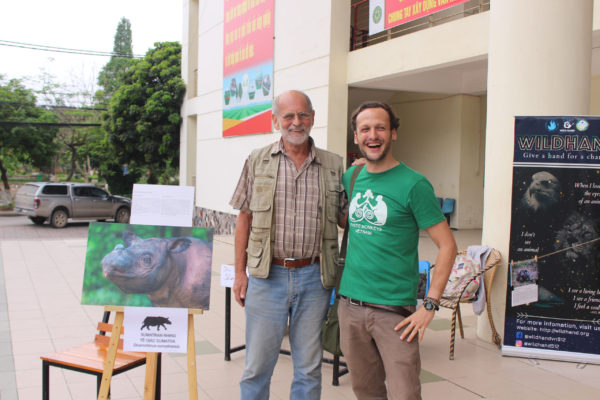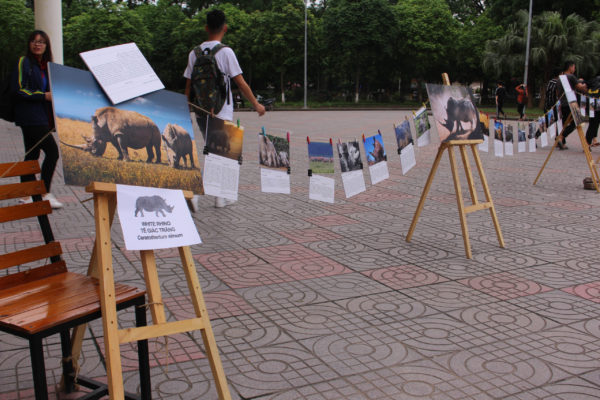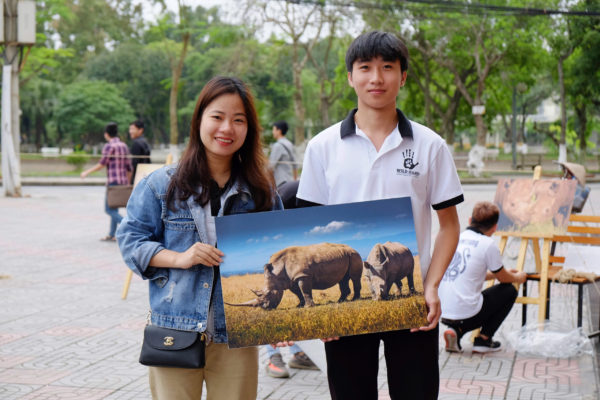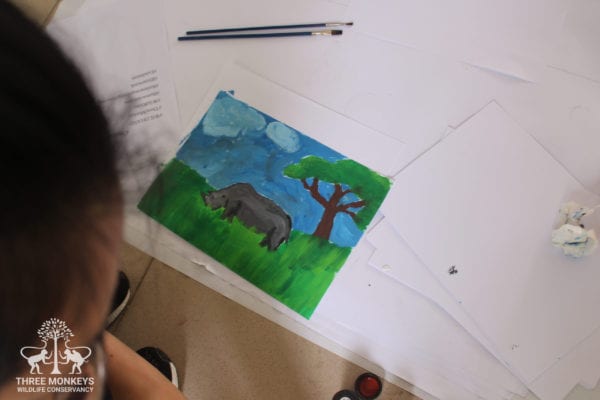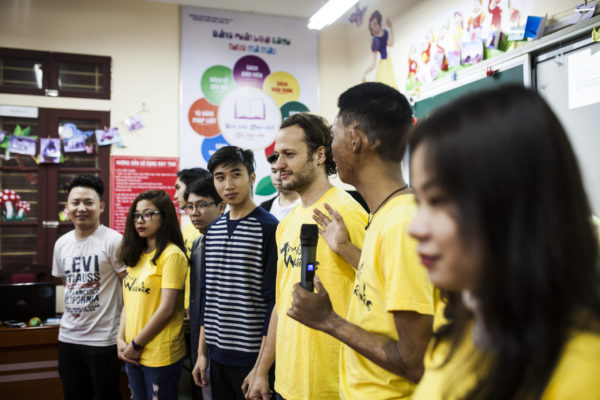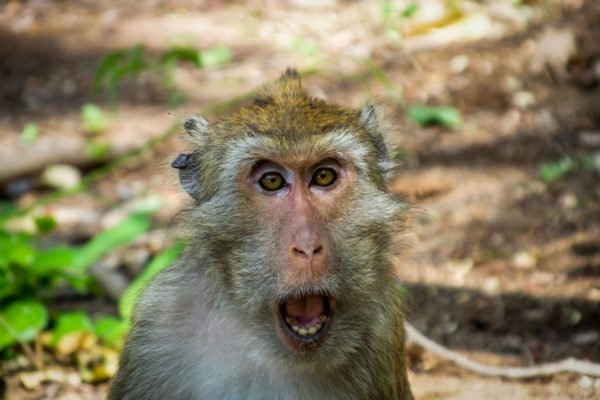
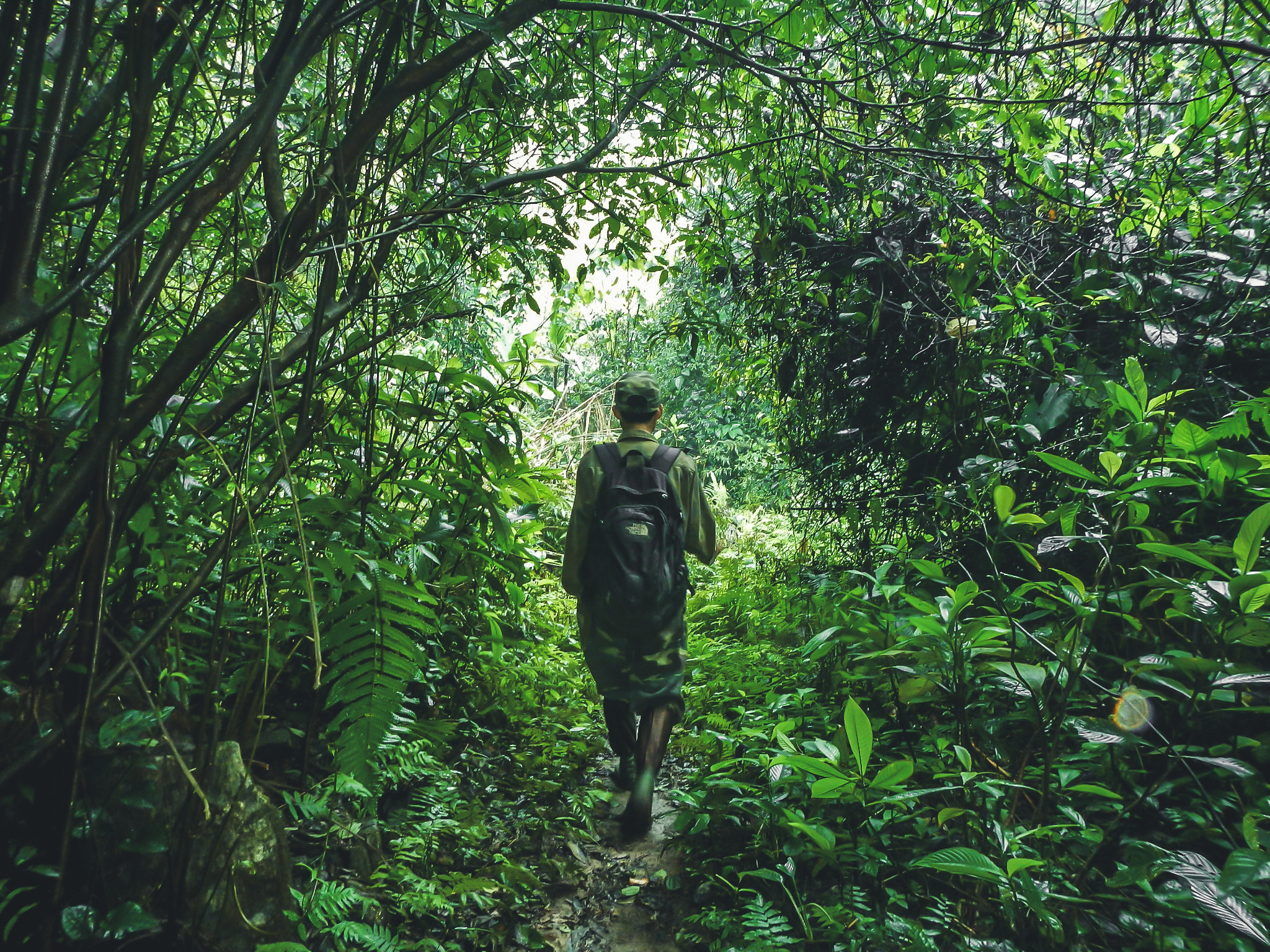
Scientific Officer
Position: Scientific Officer
Office Locations: Hanoi and Cuc Phuong, Vietnam
Deadline: 31st of August 2023
ABOUT THREE MONKEYS WILDLIFE CONSERVANCY:
Three Monkeys Wildlife Conservancy is an NGO headquartered in Belgium, holding an operational permit to carry out conservation projects in Vietnam. Through dedicated on-the-ground efforts, we collaborate closely with local communities, government bodies, and stakeholders to safeguard endangered species and their natural habitats. Our commitment to conservation is upheld through rigorous in-situ conservation, scientific research, environmental education, and empowering stakeholders. We strive to create a sustainable future that places value on and safeguards Vietnam’s natural heritage, recognizing that our efforts extend to the preservation of our shared planet as a whole.
JOB DESCRIPTION:
We are currently seeking a dedicated and passionate Scientific Officer to join our team at Three Monkeys Wildlife Conservancy. In this role, you will be responsible for implementing biodiversity and threat monitoring using innovative survey technologies. Your primary focus will be on establishing community-based patrolling units through the integration of SMART (Spatial Monitoring and Reporting Tool). Your responsibilities will involve conducting surveys, collecting, analyzing data and reporting on wildlife populations, training community members in patrolling and surveying techniques, and coordinating patrolling activities. While the primary focus of these surveys will be on key priority fauna such as primates, it may include survey of other vertebrate taxa. Your contributions will extend to grant writing, fundraising efforts, collaborations, workshops and project administration. This presents an exceptional opportunity to make a meaningful impact on wildlife conservation, empower local communities, and actively contribute to the preservation of Vietnam’s exceptional biodiversity. As a Scientific Officer, your role will also be pivotal in supporting our mission and driving meaningful conservation efforts.
QUALIFICATIONS:
- Vietnamese national
- Bachelor’s or Master’s degree in zoology, conservation biology, environmental science, wildlife management, forestry, or a related field
- Recent graduates or early career professionals are encouraged to apply
- Ability and willingness to conduct intensive fieldwork in remote and challenging environments
- Proven interest and/or experience in wildlife conservation
- Understanding of research methodologies for biodiversity surveys, basic statistical concepts, and database management skills
- Technical familiarity with relevant software for data gathering, analysis, and reporting, with an openness to learn
- Experience with SMART technology is an advantage for this application.
- Strong English communication skills (written and verbal) are highly desirable
- Excellent teamwork and interpersonal skills, coupled with strong critical thinking abilities
CONTRACT DURATION:
The position provides a 12-month full-time contract, which includes a probationary period. There is a possibility of extension, based on performance and the availability of funding
APPLICATION PROCESS:
Interested candidates are invited to submit a cover letter, CV, and relevant supporting documents to [email protected] by the deadline of August 31st, 2023. In the cover letter, please express your interest in the position and outline how your qualifications align with the responsibilities and requirements stated in this job description.
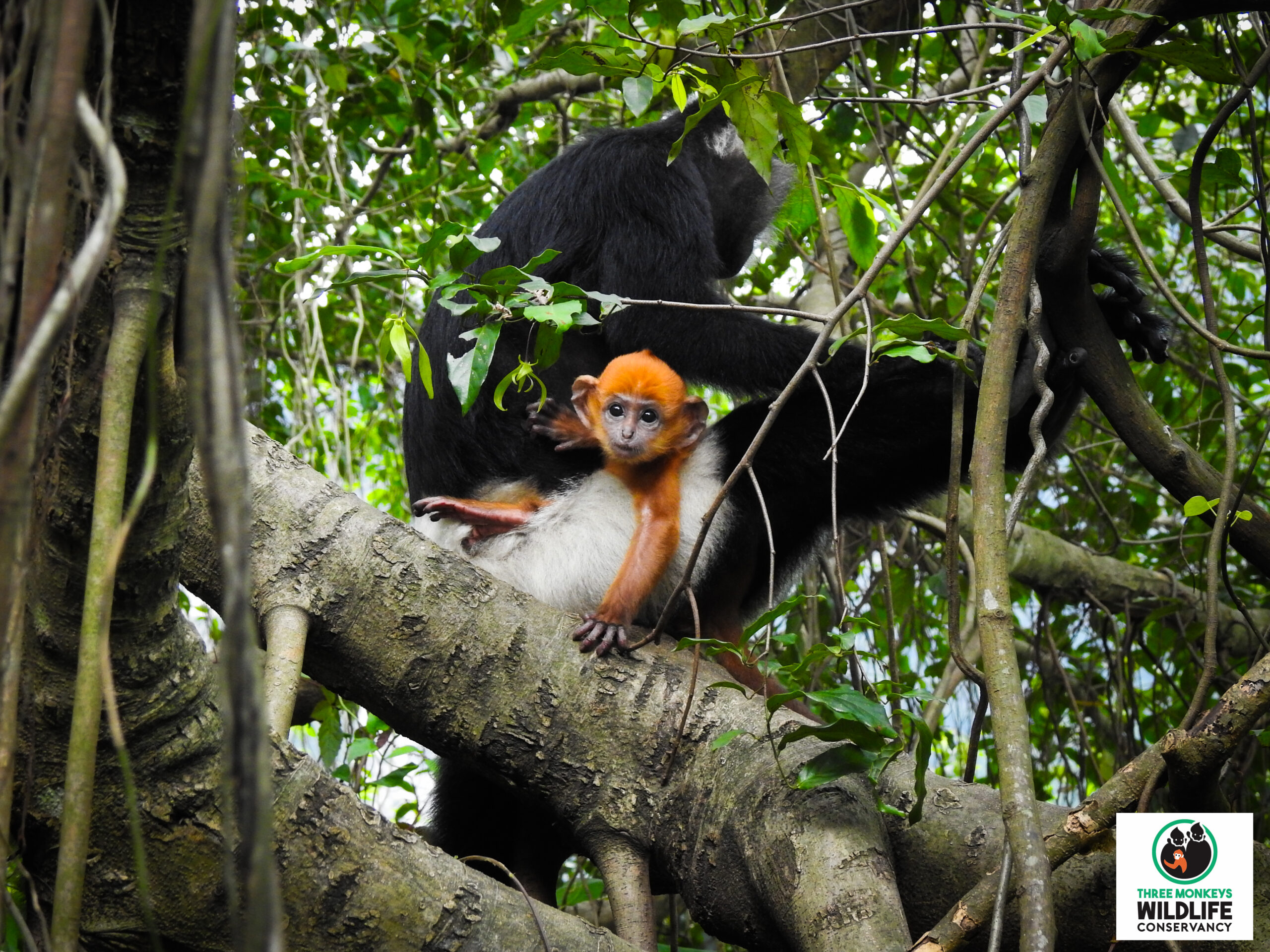
DELACOUR’S LANGUR REINTRODUCTION PROJECT IN TRANG AN UNESCO HERITAGE SITE, NINH BINH PROVINCE, VIETNAM
Delacour’s langur (Trachypithecus delacouri) is a primate species that is found only in the northern region of Vietnam. The species is critically endangered, with only an estimated population of fewer than 275 individuals left in the wild. The largest population is located in Van Long Nature Reserve in Ninh Binh province and the second population is found in the adjacent area in Kim Bang District in Ha Nam province. The only viable population, however, is in Van Long Nature Reserve with less than 200 individuals. To conserve the species, a new population must be established in a highly protected area.
Where would be the perfect place to establish a thriving new population for the critically endangered Delacour’s Langur?
In order to determine the best place to establish a new population, criteria such as the availability of natural limestone habitats and high protection status must be considered. The Trang An Scenic Landscape Complex was determined to be the best location for Delacour’s langur. The complex has a vast system of limestone karst mountains and valleys, cliffs, and caves that provide ideal habitats for the langurs. The Delacour’s Langur has actually been spotted in Trang An until the late 1900s! The complex was recognized as a UNESCO Heritage Site in 2014, leading to increased conservation efforts and wildlife protection by the government. This includes the training and assignment of rangers, ensuring that our langurs have the best possible chance at a bright future.
Weekly follow-up has indicated that the group is adapting well to their natural environment and has even shown good signs of population growth, now doubling the size to six individuals, including the parents as one male and two females transferred from the Endangered Primate Rescue Center, and three juveniles born on the island. The first baby langur is a charming female named “Hope”, who was born on the 24th of October in 2021, just one year after the reintroduction took place. On the 22nd of August of the next year, the other mom also gave birth to her first son called “Khoai Lang”, which means sweet potato in Vietnamese since it’s his favorite food. Merely three months ago, Hope’s mom just delivered a beautiful boy on the 26th of March and we call him “Cam” referring to his color in Vietnamese. It’s truly a joy to witness new langurs joining the family each year!
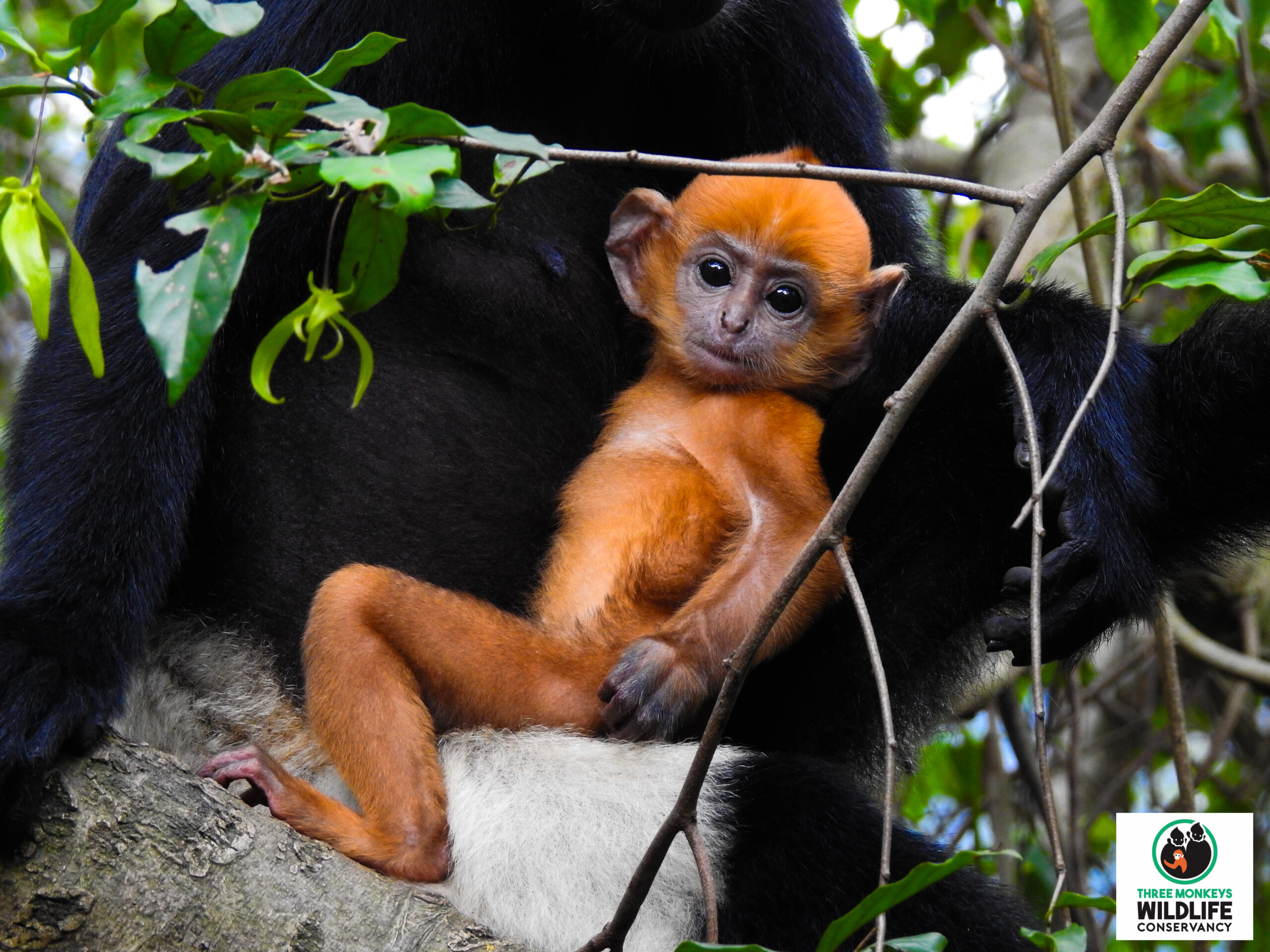
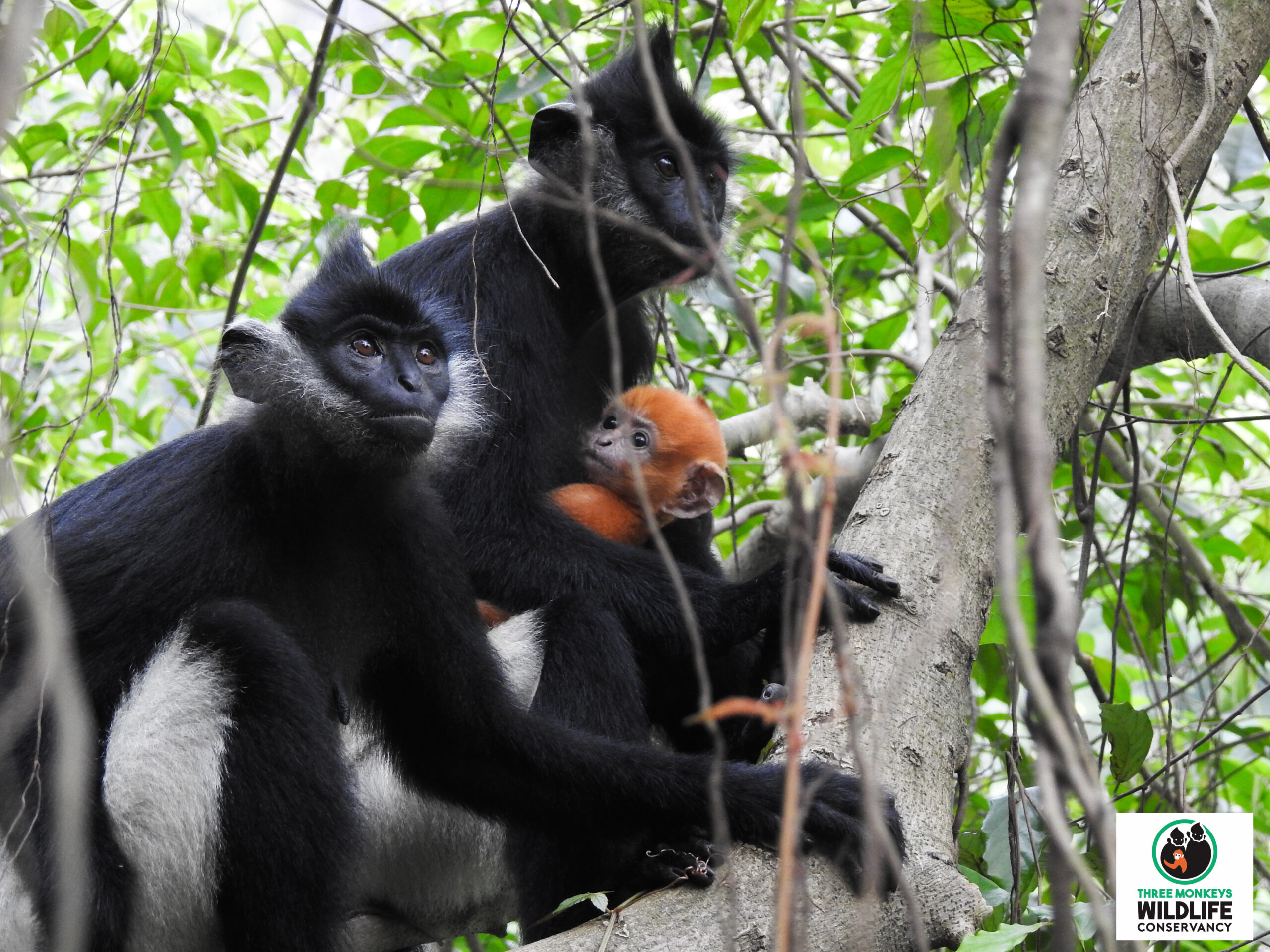
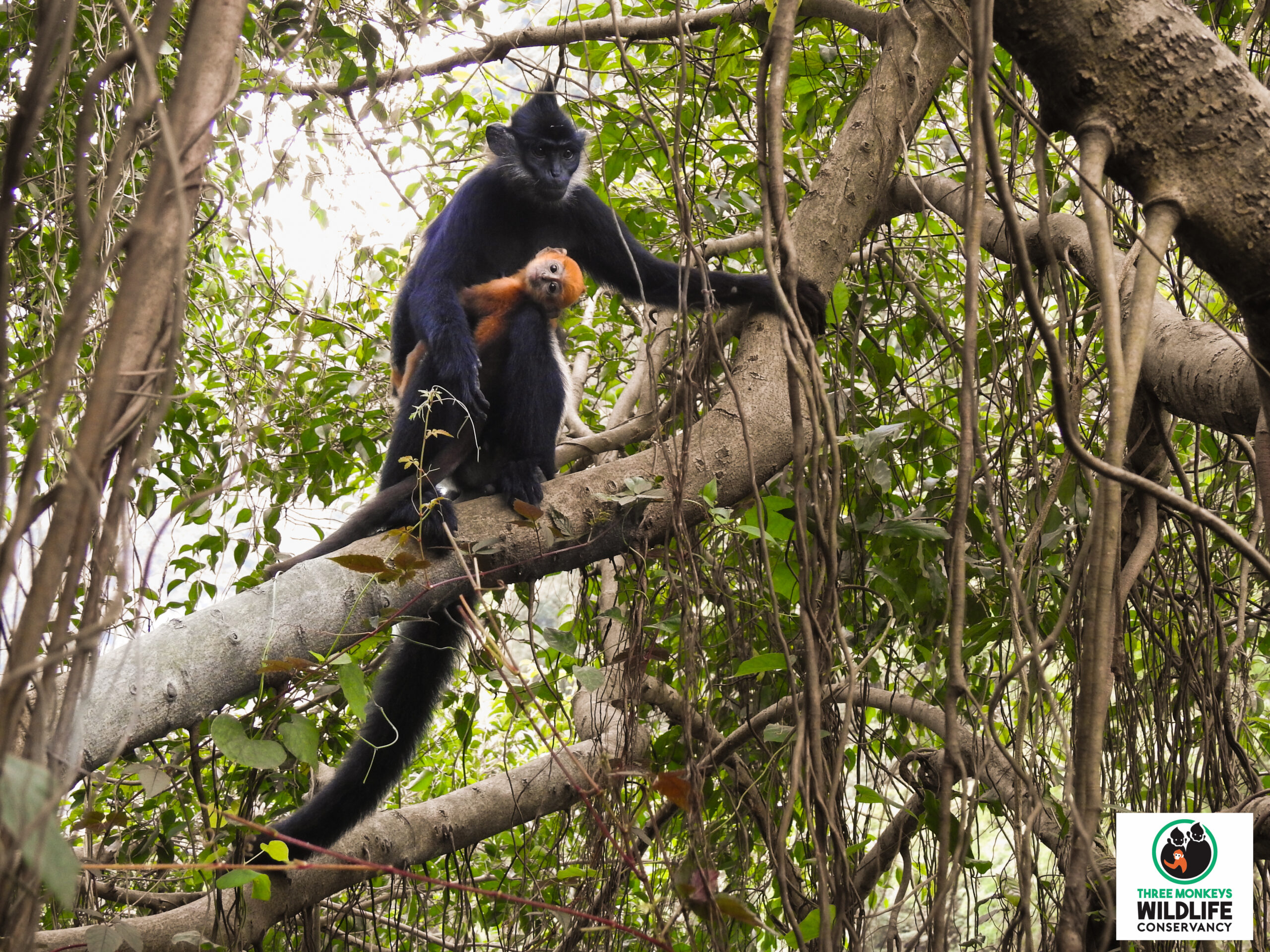
This incredible reintroduction project aims to establish a protected subpopulation of the critically endangered Delacour’s Langur, enhancing their conservation status and increasing the species’ long-term survival rate. The presence of the langurs has also been attracting tourists, providing an opportunity for educating the public on the importance of conserving the species. The project is supported by the government, sponsors, partner organizations, biologists, rangers, and other contributors. Our team is looking forward to further developing the project in the near future.
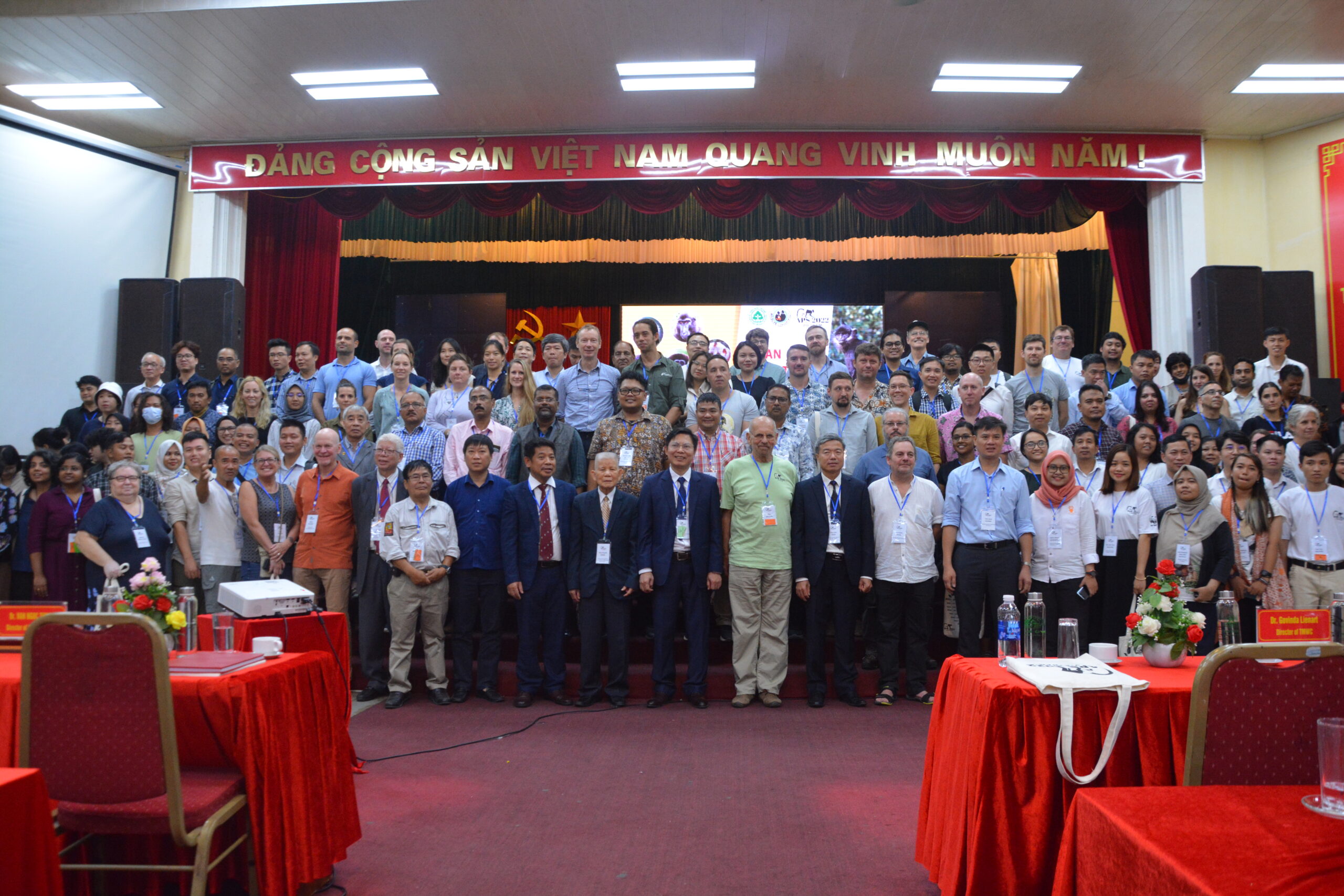
INTERNATIONAL PRIMATE EXPERTS UNITED
AT THE 8TH ASIAN PRIMATE SYMPOSIUM IN VIETNAM
Following the success of the seven previous Asian Primate Symposiums, Vietnam hosted in November 2022 the 8th Asian Primate Symposium. Vietnam, with its diverse ecosystem harboring 24 species and two subspecies of primates, is the ideal location for primatologists to converge and discuss their research and conservation work. This symposium was organized by Three Monkeys Wildlife Conservancy in collaboration with the Vietnam National University of Forestry, for which reason, the university was chosen for the event to take place.
The 8th Asian Primate Symposium lasted four days, from the 13th to the 16th of November 2022. More than 150 experts, researchers, and conservationists working in 91 organizations from more than 20 countries worldwide participated in the symposium.
The symposium kickstarted in the evening by warmly welcoming the participants, for which a cozy and fun icebreaking dinner was organized. The following day, November 14th, the opening ceremony officially occurred with the attendance of governmental officials, renowned scientists, journalists, and all participants of the symposium.
During the two days of 14th and 16th November, 62 presentations and discussions were given by the partakers to share new research, knowledge, or experiences in primate conservation in their countries. The presentations were divided into different sessions covering the following main themes: 1) Human – Nonhuman primate interactions and conflicts, 2) Genetics & Conservation, 3) Conservation, 4) Conservation and Behavior, 5) Conservation of gibbons, 6) Drone survey methods, and 7) Behavior (ethology).
Besides the oral presentations, attendees shared their research through poster presentations during the symposium’s poster session. All participants had also plenty of animated discussions during the sessions, tea breaks, and even during meals.
On November 15th, the attendees went on an excursion trip to Cuc Phuong National Park, Ninh Binh Province, and visited three rescue centers. The trip was enthusiastic as people could better understand the conservation work of wildlife in Vietnam.
The symposium had the pleasure of the participation of two talented Vietnamese wildlife artists: Dao Van Hoang and Nguyen Tien Dung. Alongside, the organizing committee also created an exhibition in parallel consisting of photographs representing all 24 species of Primates in Vietnam.
We strongly believe that the vibrant social environment provided by the symposium created an excellent opportunity for the primate scientists and stakeholders to connect and exchange knowledge, from which they can contribute better to their national as well as regional conservation work. The symposium also further enhanced the possibility of networking, thereby encouraging future collaboration between individuals and partnerships between different organizations.
We expect the overall outcome of this symposium to have a long-lasting effect beyond the time frame of the actual event, especially by contributing to the capacity building of the attendees and by strengthening a well-connected interdisciplinary community of primatologists and primate stakeholders operating in Asia.
Without the kind support of all sponsors and stakeholders, the 8th Asian Primate Symposium could not have been that successful. We would like to send our sincerest thanks to our sponsors: WWF Vietnam, Re:Wild, Frankfurt Zoological Society, American Society of Primatologists, Leipzig Zoo, and all contributions of the 150 participants, as well the considerable support and dedication of our volunteers.
See you all at the 9th Asian Primate Symposium!
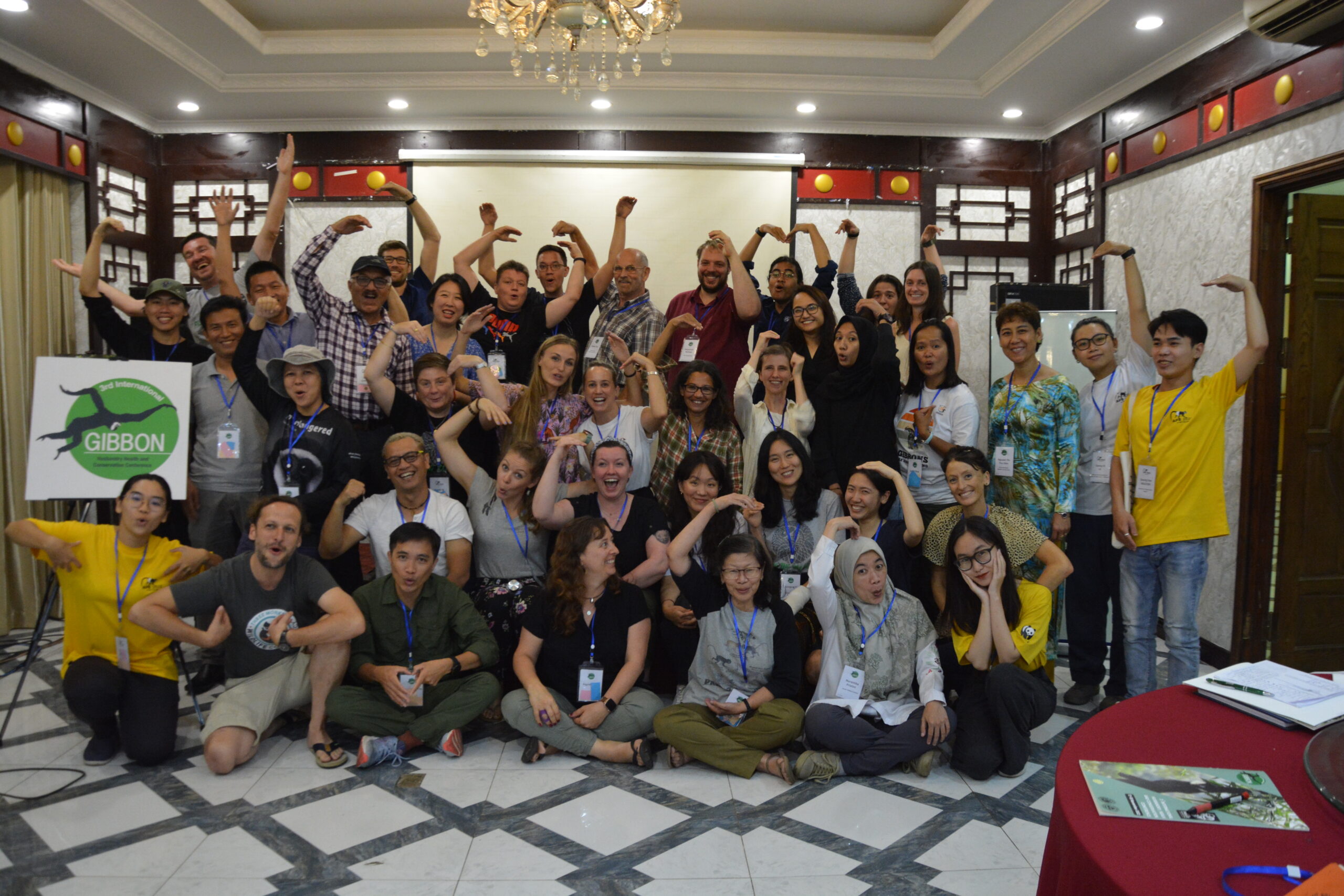
A CONTENTED AND UNFORGETTABLE EXPERIENCE FOR
GIBBON EXPERTS
The 3rd International Gibbon Husbandry, Health, and Conservation Conference took place in Vietnam from the 17th to the 19th of November, 2022. The conference happened right after the 8th Asian Primate Symposium organized at the Vietnam National University of Forestry from the 13th to the 16th of the same month. The conference was organized by Three Monkeys Wildlife Conservancy with a contribution of the Vietnam National University of Forestry, and was facilitated by IUCN/SSC Primate Specialist Group – Section on Small Apes. A total of 40 delegates from over 12 countries came together to focus on gibbon conservation.
During the first two days of the conference, the experts had several individual presentations, workshops, and group discussions to achieve common goals. Presentations focussed on conservation, health, and husbandry initiatives including research into species identification, illegal trade, activity budgets, and species management. Husbandry and health continue to advance with insights into disease prevention, management techniques, and cognition. Workshops facilitated discussion with clear actions identified for participants to work on with a focus on habitat protection and One Plan approaches and collaboration between organisations.
On the last day, November 19th, the group had a one-day excursion to Cuc Phuong National Park in Ninh Binh province, where they were introduced to Vietnam’s conservation and rescue work. In the afternoon, the partakers came to Van Long Wetland Nature Reserve so as to gaze at the natural habitat of the largest population of Delacour’s langur in Vietnam. It was such an auspicious day since the group saw about 20 langurs of different ages moving on the karst mountains. This trip was a contented, unforgettable one for all specialists and a beautiful ending for their visit to Vietnam.
We kindly thank IUCN for their tremendous support, which constitutes the success of the conference. We would like to thank also all the experts that joined and contributed to the conference and all the volunteers. Without them, the conference could not have been that successful. See you all at the 4th International Gibbon Conference.
Read also:
IUCN Newsletter about this event
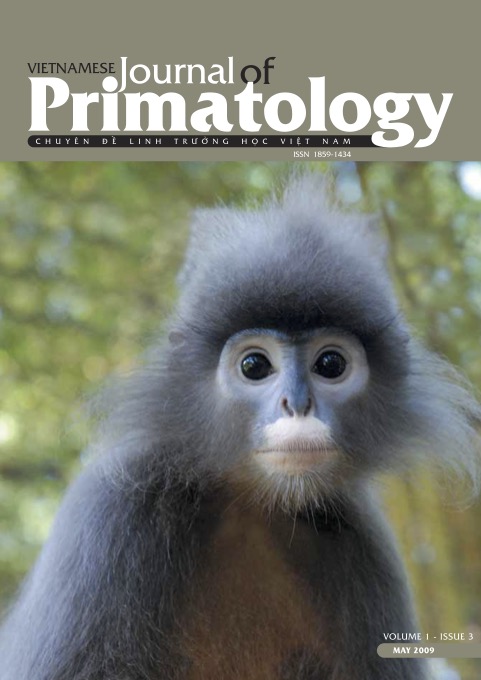
VIETNAMESE JOURNAL OF PRIMATOLOGY
Three Monkeys Wildlife Conservancy is proud to be managing since 2021 the Vietnamese Journal of Primatology, with the support of the German Primate Centre.
The Vietnamese Journal of Primatology has played since its creation in 2007 a unique role in disseminating scientific research about primates in Vietnam. The journal addresses a variety of primate-related research themes, including biology, threats, education, regulation, law enforcement, and conservation. The Editorial Board consists mainly of scientists and wildlife conservationists. The journal has gained scientific importance beyond Vietnam and is indexed in the appreciated list of primatological literature of the IUCN Primate Specialist Group. Besides its publication as hard copy, it’s also available in open access on our website as well as on the IUCN Primate Specialist Group.
ONLINE LIBRARY
EDITORIAL BOARD
EDITOR
Tilo Nadler – Three Monkeys Wildlife Conservancy , Vietnam
Tilo Nadler – Three Monkeys Wildlife Conservancy , Vietnam
CO-EDITORS
Ha Thang Long – Frankfurt Zoological Society, Vietnam
Van Ngoc Thinh – WWF, Vietnam
Christian Roos – German Primate Centre, Germany
Ha Thang Long – Frankfurt Zoological Society, Vietnam
Van Ngoc Thinh – WWF, Vietnam
Christian Roos – German Primate Centre, Germany
EDITORIAL BOARD
Hoang Minh Duc – Southern Institute of Ecology, Vietnam
Le Khac Quyet – Wildlife Consultant, Vietnam
Nguyen Hai Ha – Forestry University, Vietnam
Nguyen Xuan Dang – Institute for Ecology and Biological Resources, Vietnam
Herbert H. Covert – University of Colorado, USA
Ulrike Streicher – Wildlife Consultant, USA
Govinda Lienart – Three Monkeys Wildlife Conservancy, Belgium
Larry Ulibarri – University of Oregon, USA
Catherine Workman – National Geographic, USA
Hoang Minh Duc – Southern Institute of Ecology, Vietnam
Le Khac Quyet – Wildlife Consultant, Vietnam
Nguyen Hai Ha – Forestry University, Vietnam
Nguyen Xuan Dang – Institute for Ecology and Biological Resources, Vietnam
Herbert H. Covert – University of Colorado, USA
Ulrike Streicher – Wildlife Consultant, USA
Govinda Lienart – Three Monkeys Wildlife Conservancy, Belgium
Larry Ulibarri – University of Oregon, USA
Catherine Workman – National Geographic, USA

Wildlife on the MOVE
With growing development, our society is increasingly disconnected from the natural world, leading people to lose interest in protecting nature and the animal wildlife it inhabits. This issue is especially of concern for fast-growing countries like Vietnam, which harbours one of the few remaining biodiversity hotspots on earth. With the ‘Wildlife On The Move’ project in Vietnam, we are bringing wildlife closer to people in an interactive, fun, harmless, and creative way.
Similar to pop-up events, the ‘Wildlife on the Move’ events can easily and quickly be set up and taken apart the same day, allowing to tour around larger geographic areas in various communities. These communities include schools, universities, galleries, cafés, festivals, businesses, and even more remote rural communities in proximity of a threatened species requiring urgent protection.
We believe that ‘planting seeds’ in different communities about the importance of conserving wild animals will lead to cascading effects from the individual level, to local projects, to networks and alliances, and eventually to movements that provide a real collective possibility for change.
Primates on the Move
The launching of the ‘Wildlife On The Move‘-project was initially inspired by ‘bringing’ primates closer to people through a primate photo exhibition. There are a stunning 24 different species of primates living in the forests of the country, with some of the most beautiful and spectacular monkeys in the world. Unfortunately, the lack of care to preserve primates and their homes, has driven most of the primate species in only a few decades at the edge of extinction, with some species being only represented by only 60 individuals remaining in the wild.
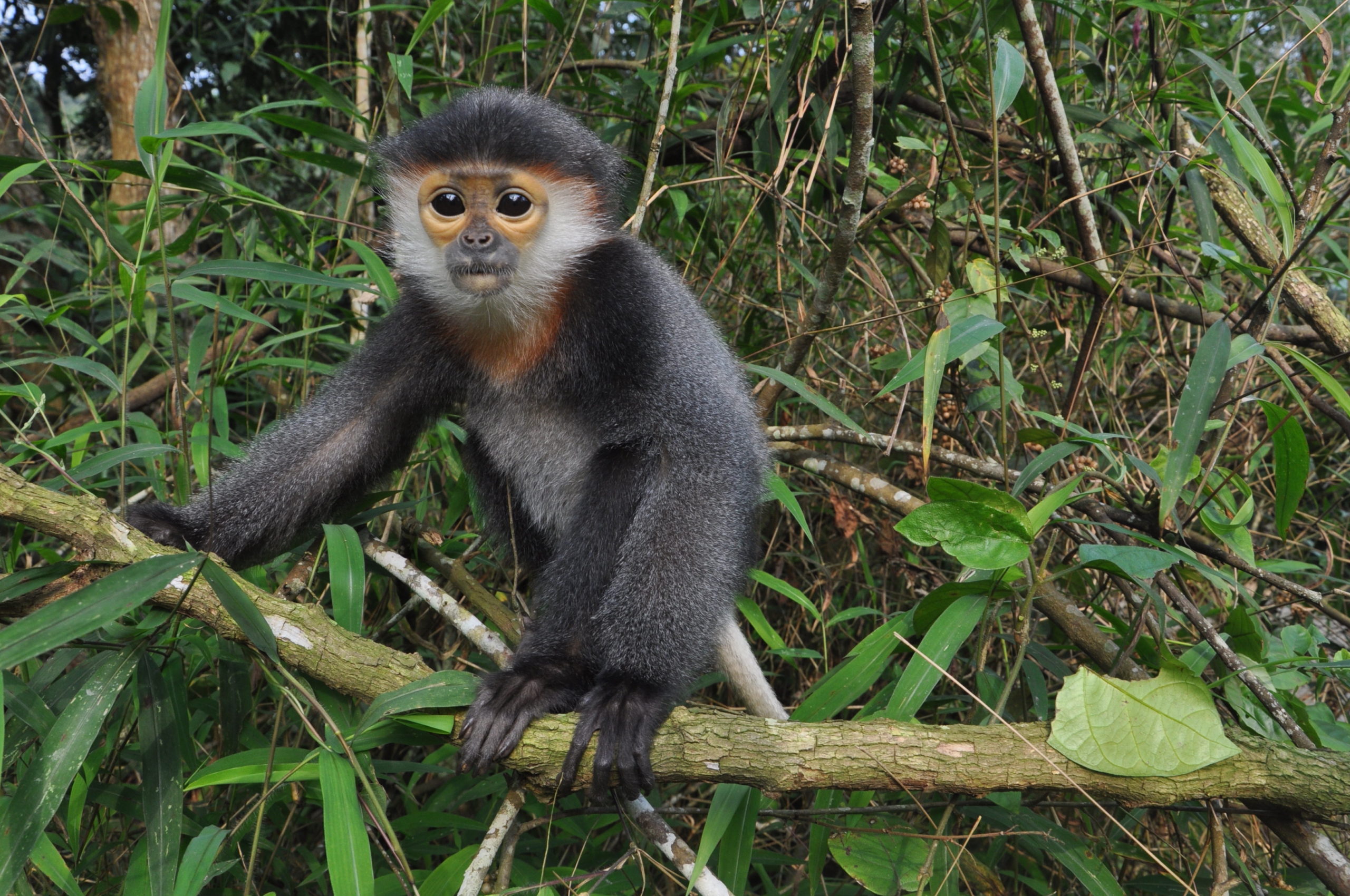
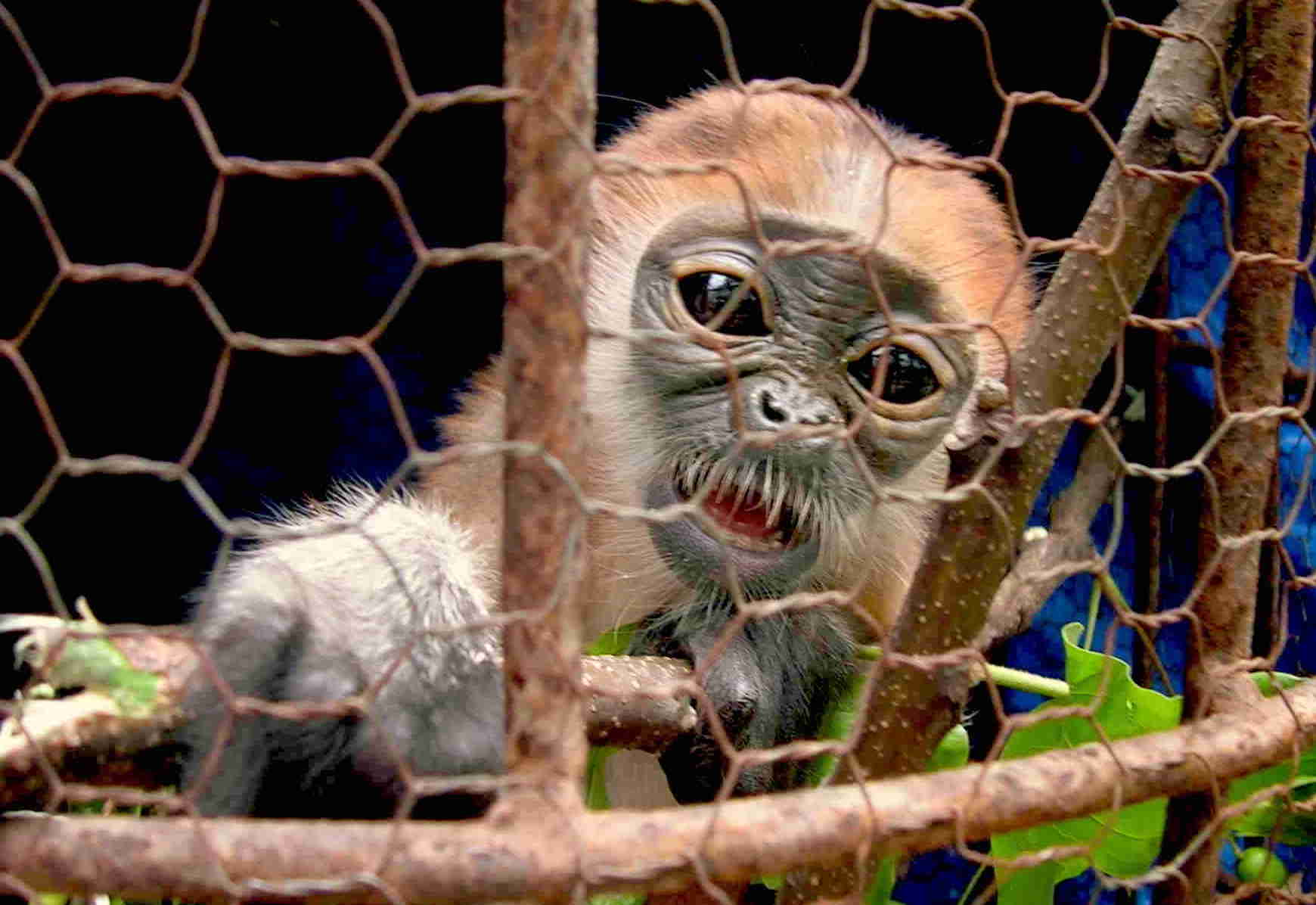
The urgent need to raise awareness about the importance of protecting primates in Vietnam and wildlife in general has led us to put together the exhibition ‘Primates of Vietnam: Living on the Edge’
The success of the exhibition encourages us to start touring around the exhibition in different locations of Hanoi, the capital city of Vietnam, including galleries, festivals, schools, and universities. Side events during the exhibition, like guided explanations, games, and artwork, further increased the people’s engagement. We are grateful to have received support along the way from a variety of organizations, including Global Conservation Force, Wildhand, and Endangered Primate Rescue Center.
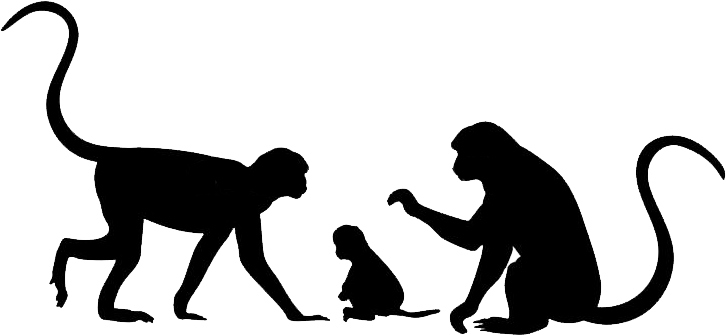
Rhinos on the Move
The primate exhibition attracted a large and diverse audience, which encouraged us to scale up by setting up new exhibitions as well as educative material for different groups of threatened animal species, including rhinos. The term ‘rhinoceros‘ means ‘nose horn‘ which pertains to the majestic horns growing from the rhino’s snout. But, it is that same horn, that has been a real curse for these animals, leading all rhino species to the brink of extinction.
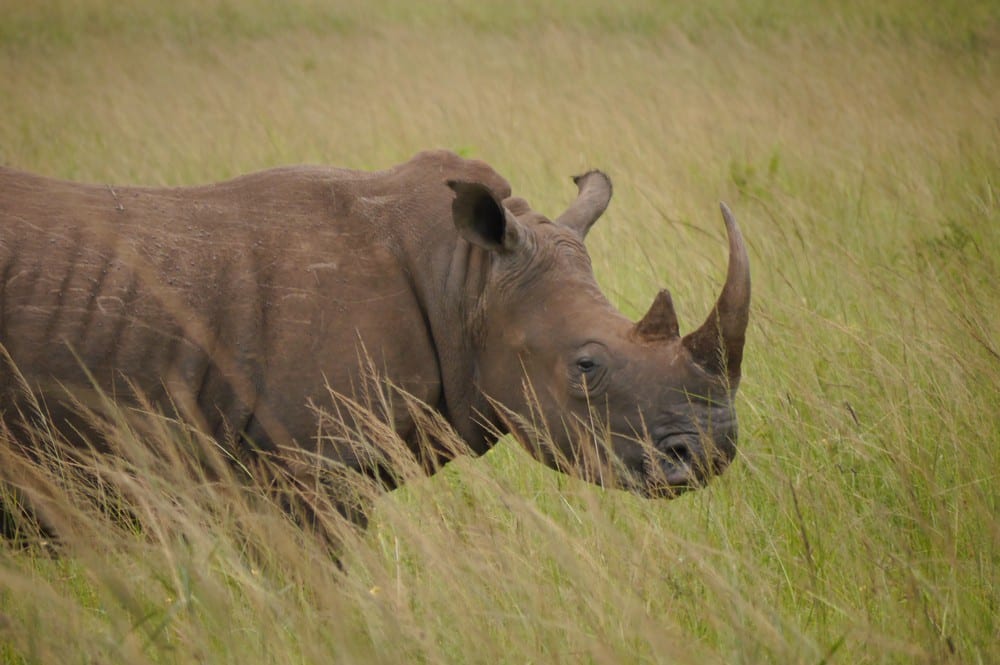
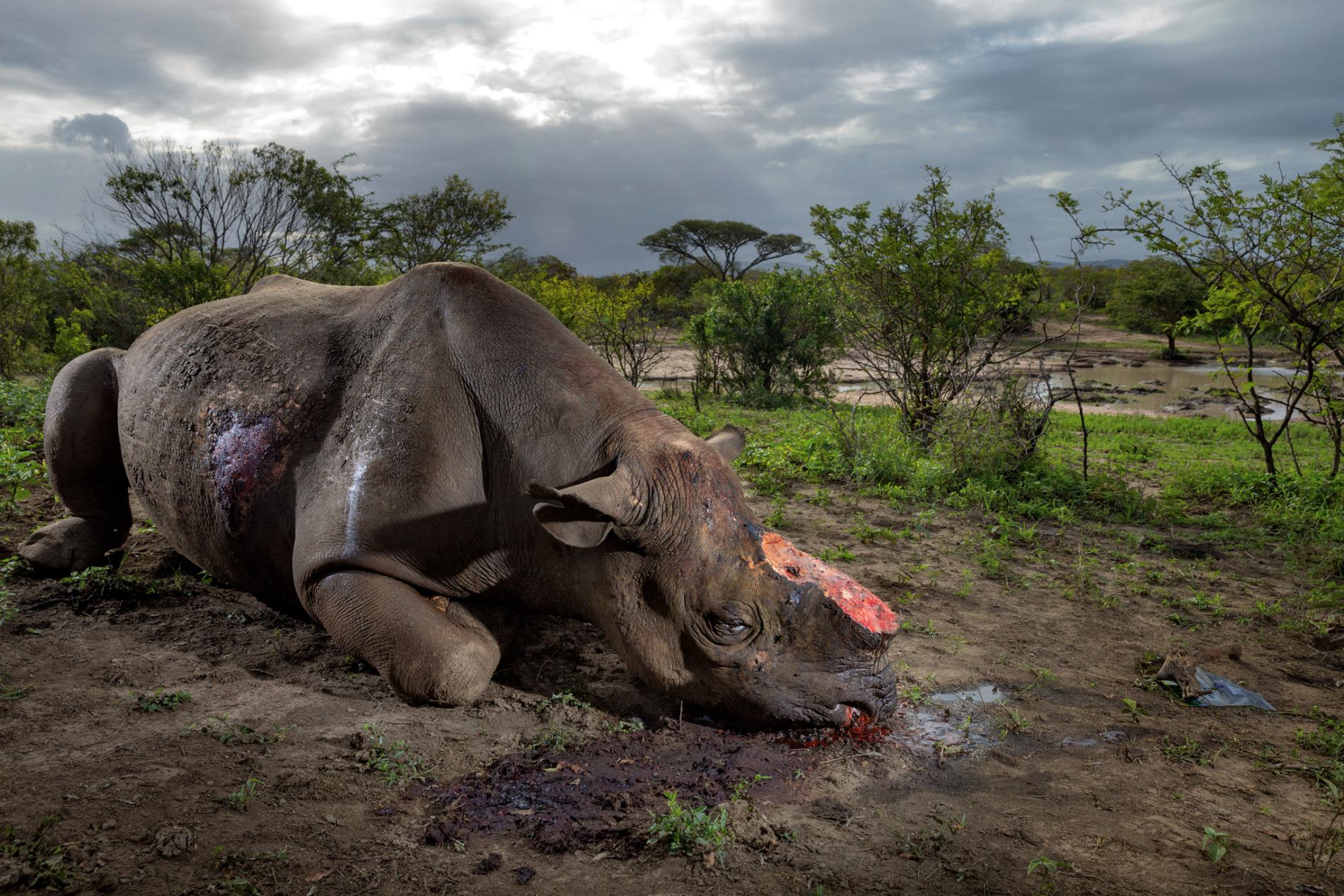
Rhino horn is very desirable amongst the wealthy classes of Viet Nam, where it is considered a symbol of power and wealth. This cultural importance is supported by an underlying false belief in health benefits, in the form of traditional medicine. Today, Vietnam has grown as one of the world’s largest consumers of rhino horn in the world. This has not only led to a disastrous collapse of all rhino populations across the world but also to deadly wars between poachers against rangers desperately fighting to protect these vulnerable animals.
In Vietnam, the very last existing rhino in the wild was recently shot in 2010 by poachers to fuel the demand for horn. It is with the hope that a similar sad story does not repeat itself across the world for other rhino populations, we teamed up with other civil societies (Wilderness Foundation Africa, Wildhand) to put together and showcase the photo-exhibition: ‘BORN WITH HORNS’.
Wildwarriors
Our increasing experience of moving around with the wildlife educative material allowed us to start events outside Hanoi, especially in schools in the proximity of vulnerable wildlife hotspots, such as the local primary schools near Ba Vi National Park, Vietnam. ‘Wildlife on the Move’ project in schools has been a very cost-effective way to convert the kids into proud WILDWARRIORS sensitive to the importance of protecting the wildlife of their country.
We initiated in some schools regular visits to the same kids to reinforce their environmental awareness in the long run and take the time to introduce them to the incredible animal biodiversity in Vietnam. Eventually, the wild warriors were so enthusiastic to learn that we decided to reward them by taking them to animal wildlife rescue centers where they got to meet in real many of the endangered species.
”'In the end, we will conserve only what we love; we will love only what we understand and we will understand only what we are taught.' Baba Dioum
